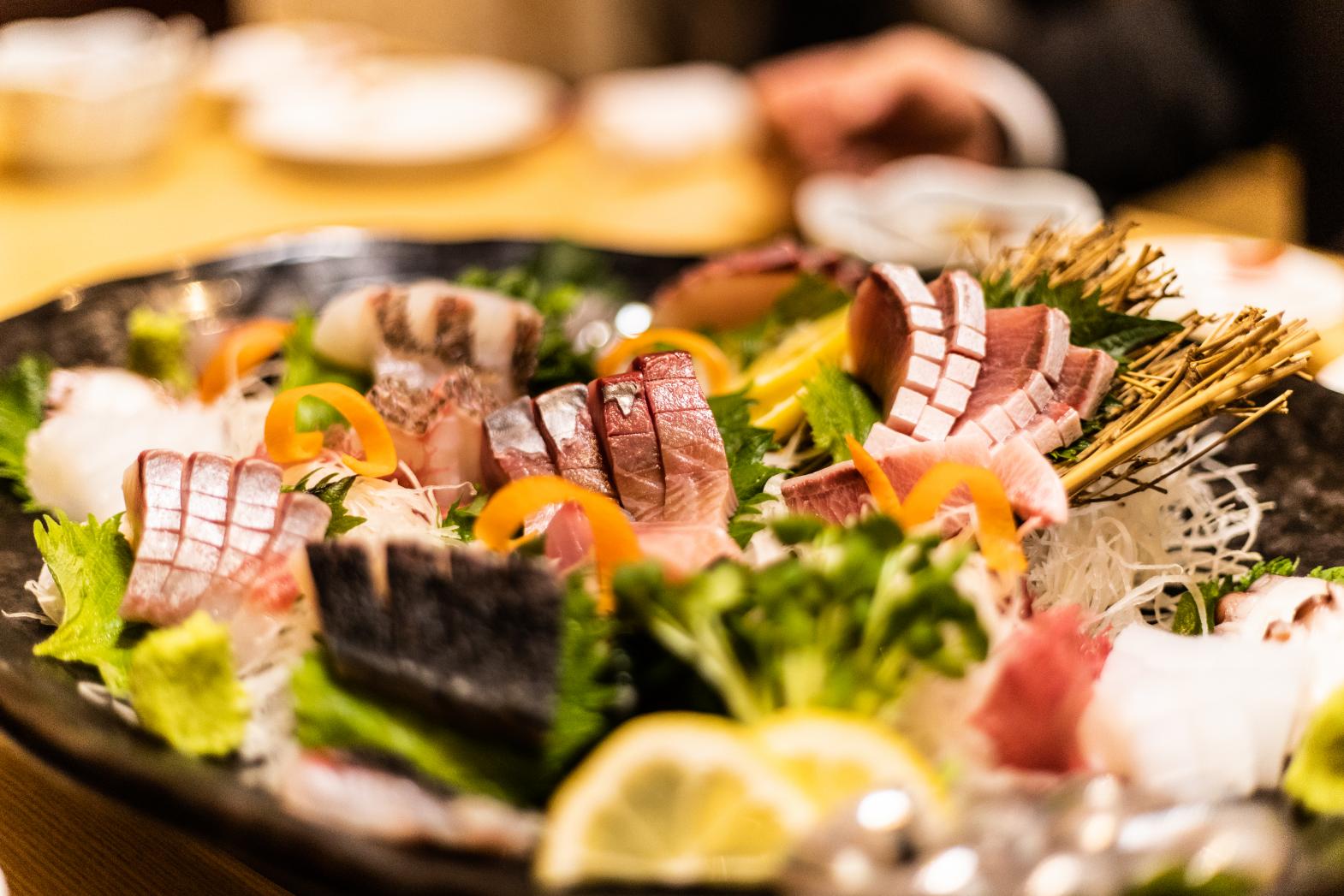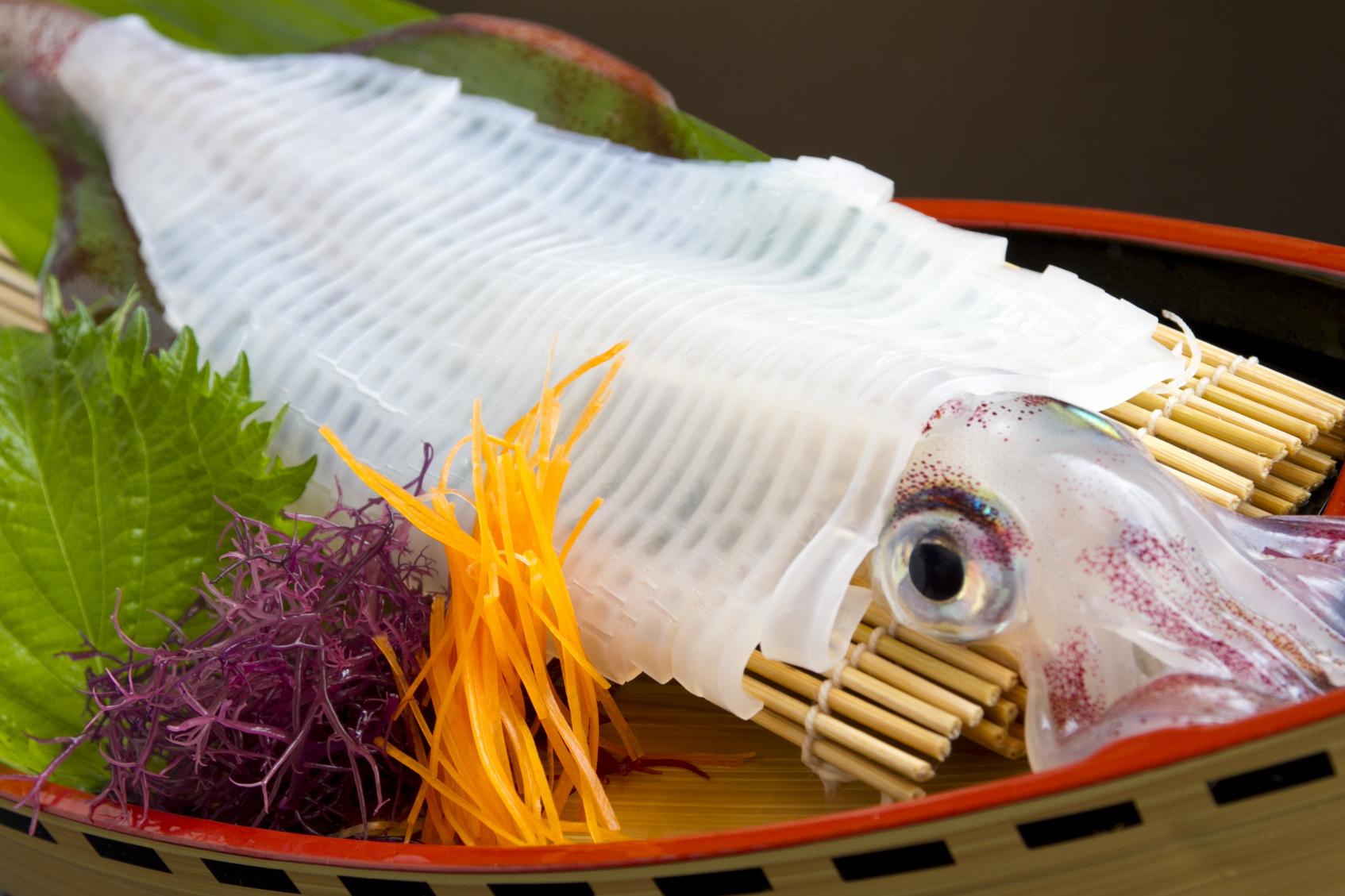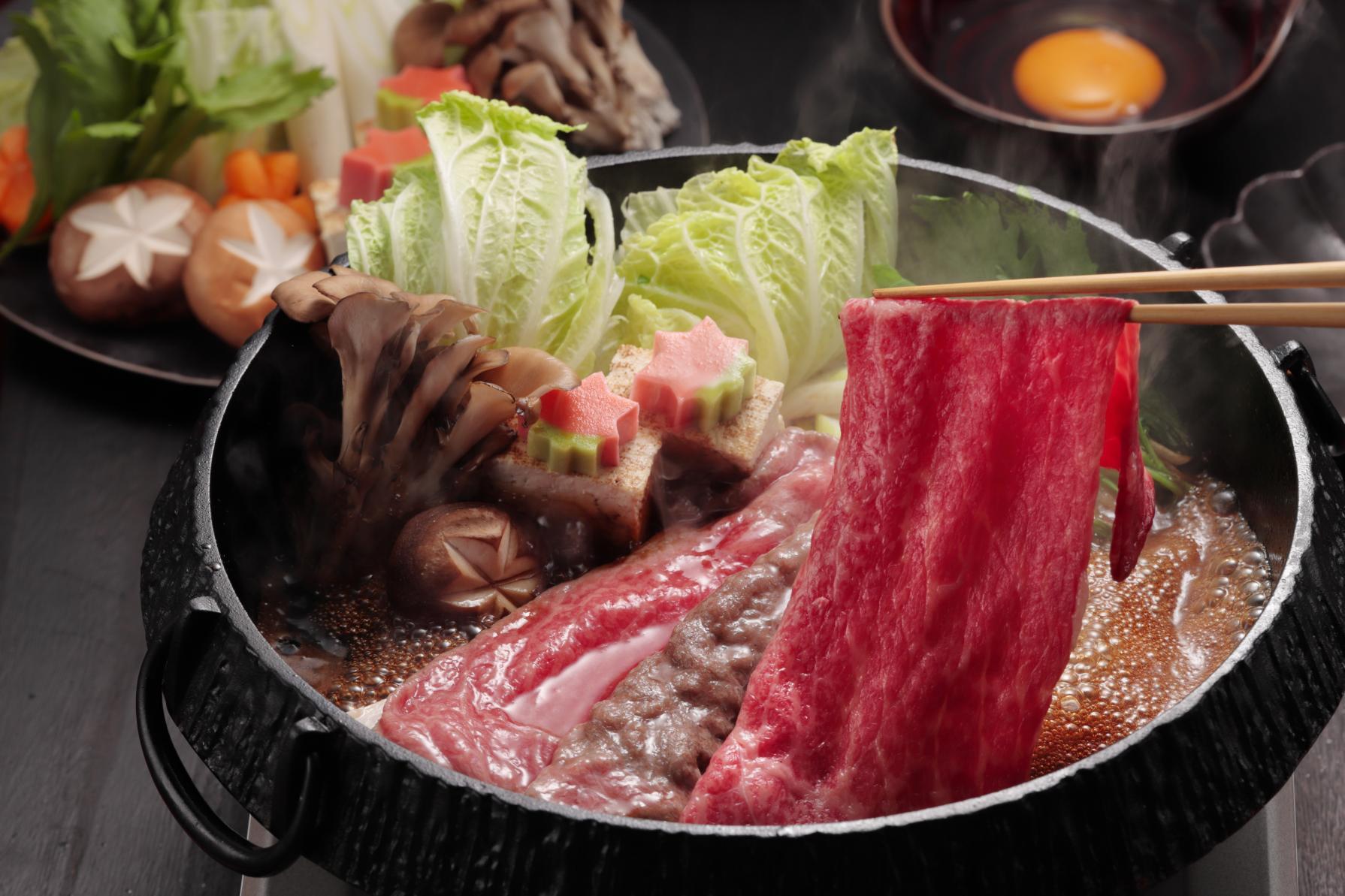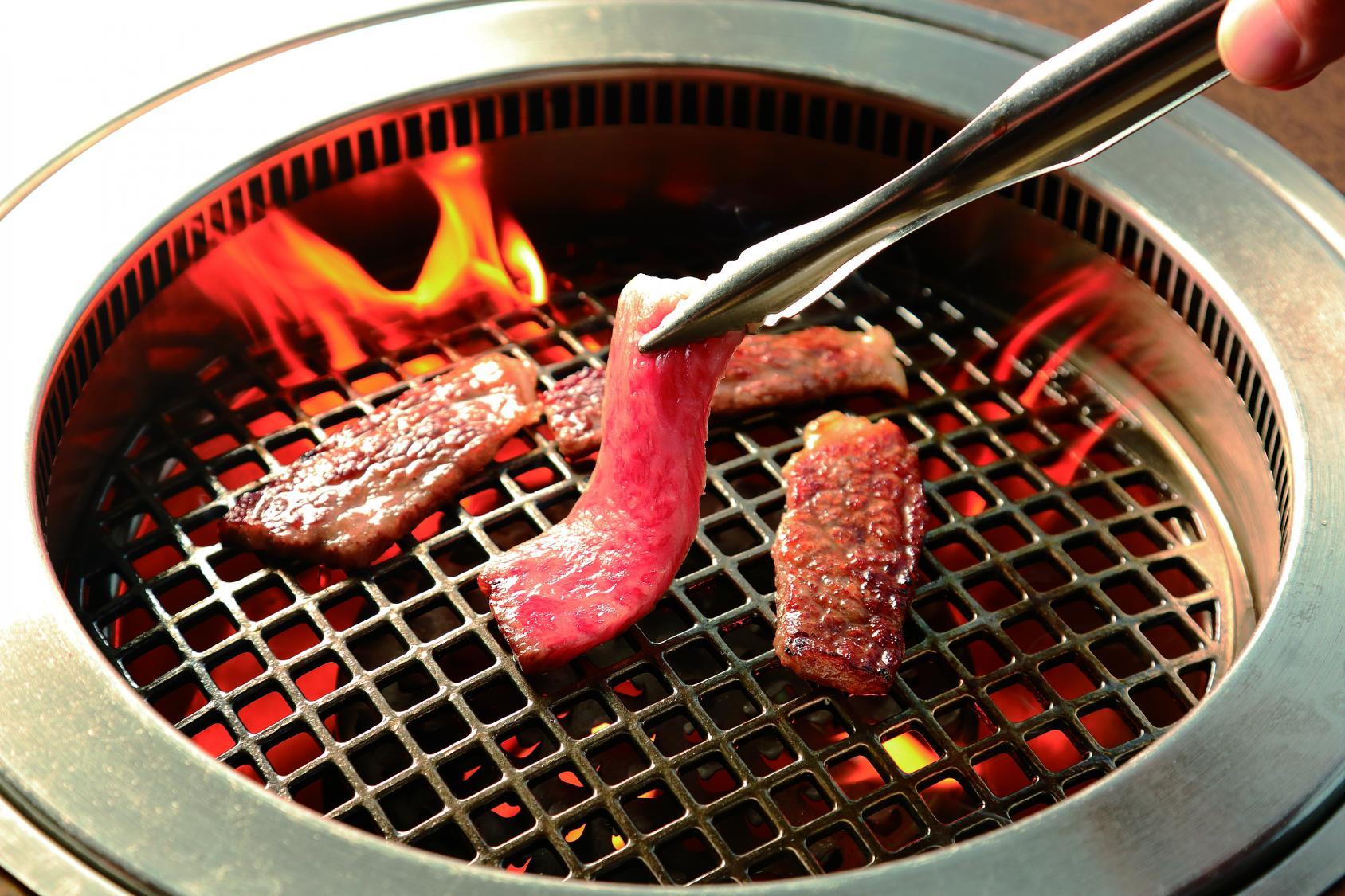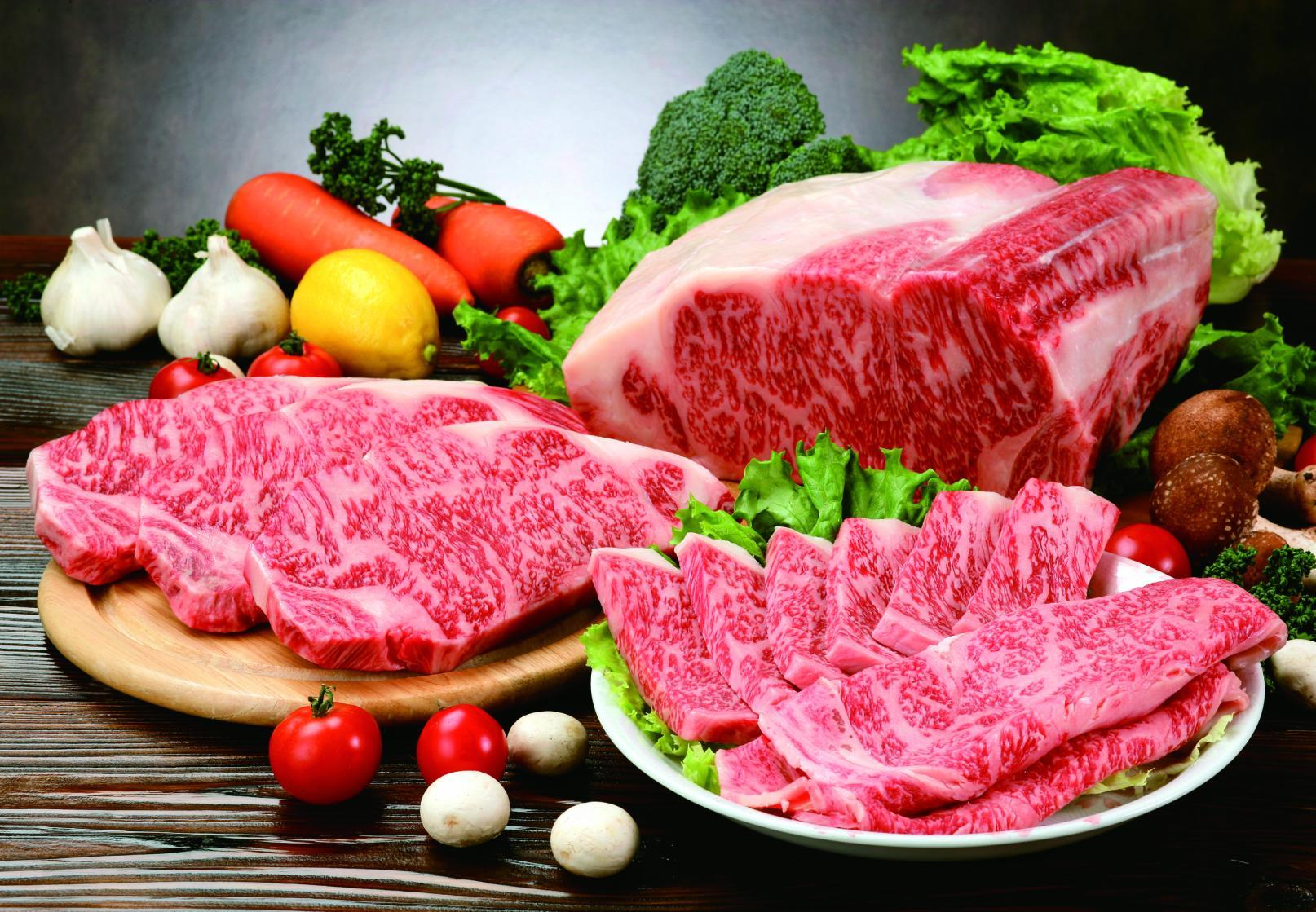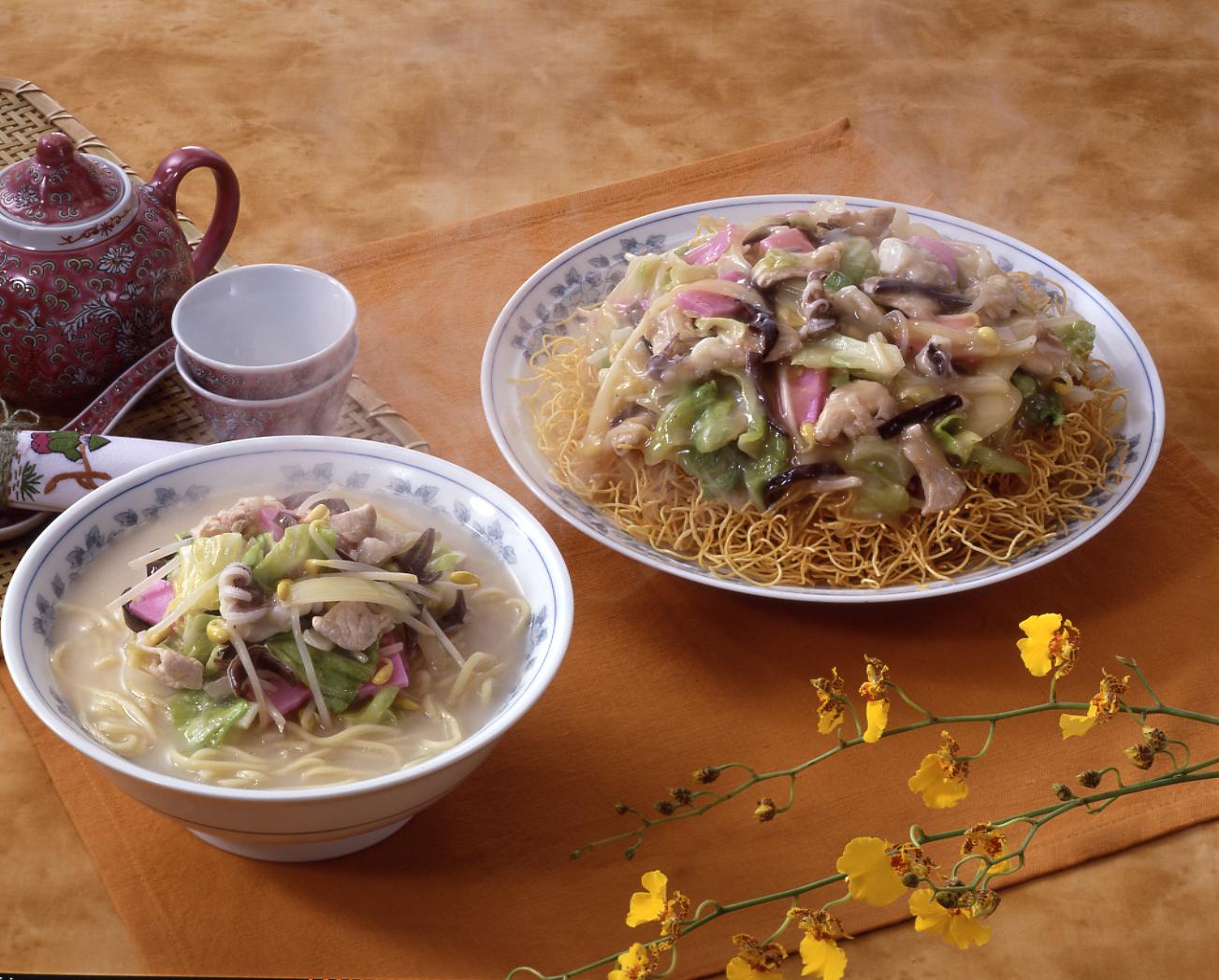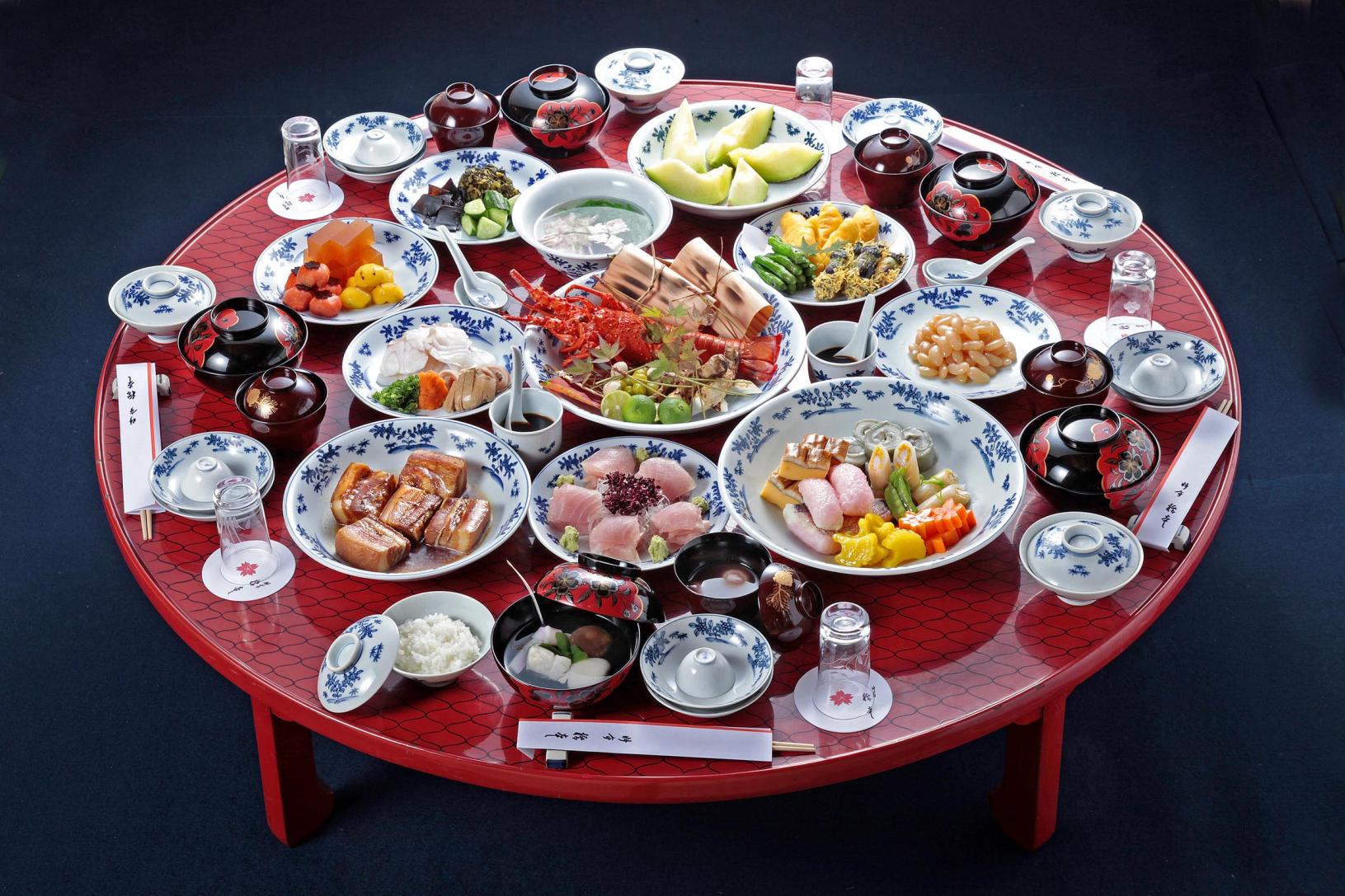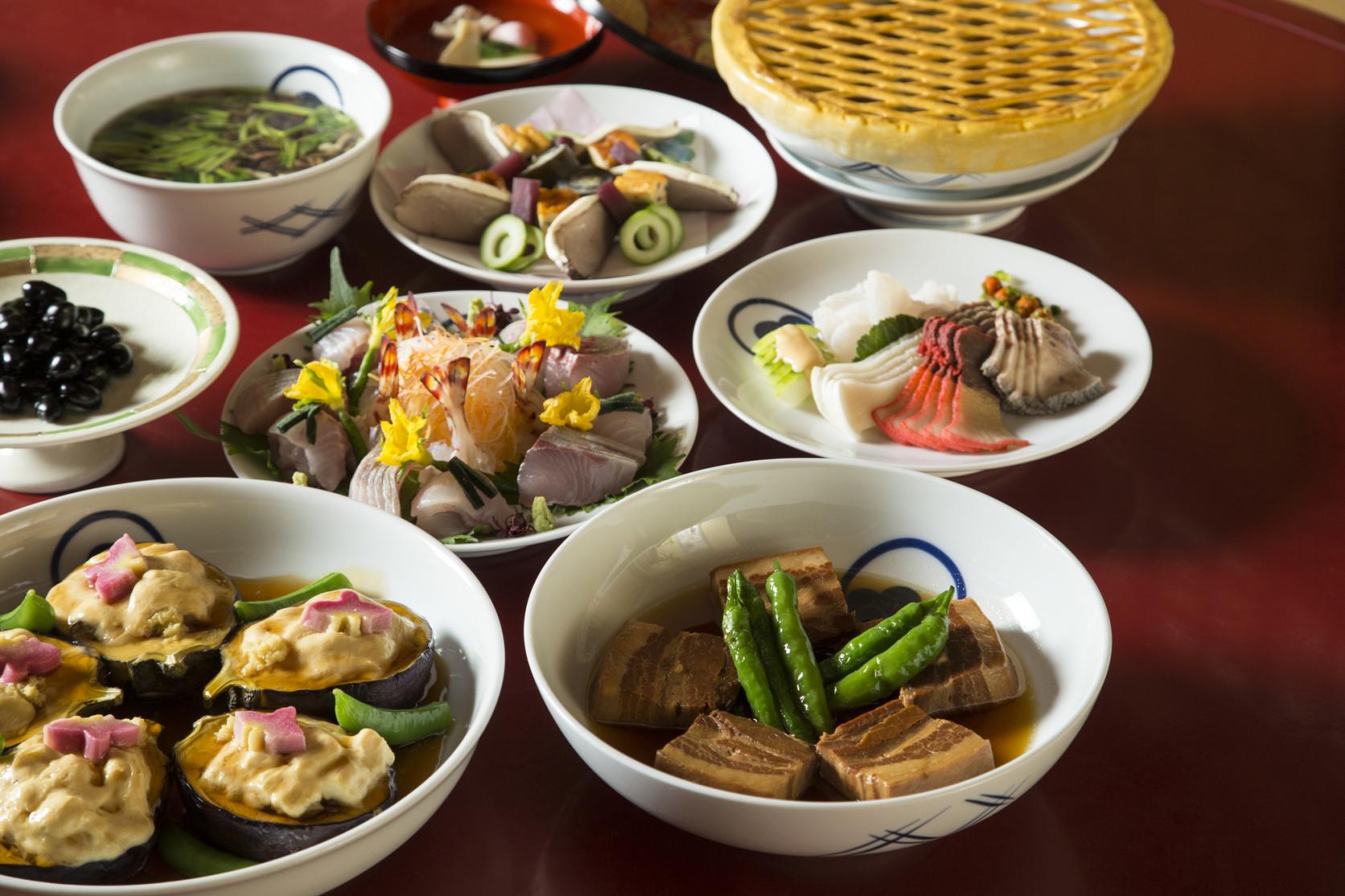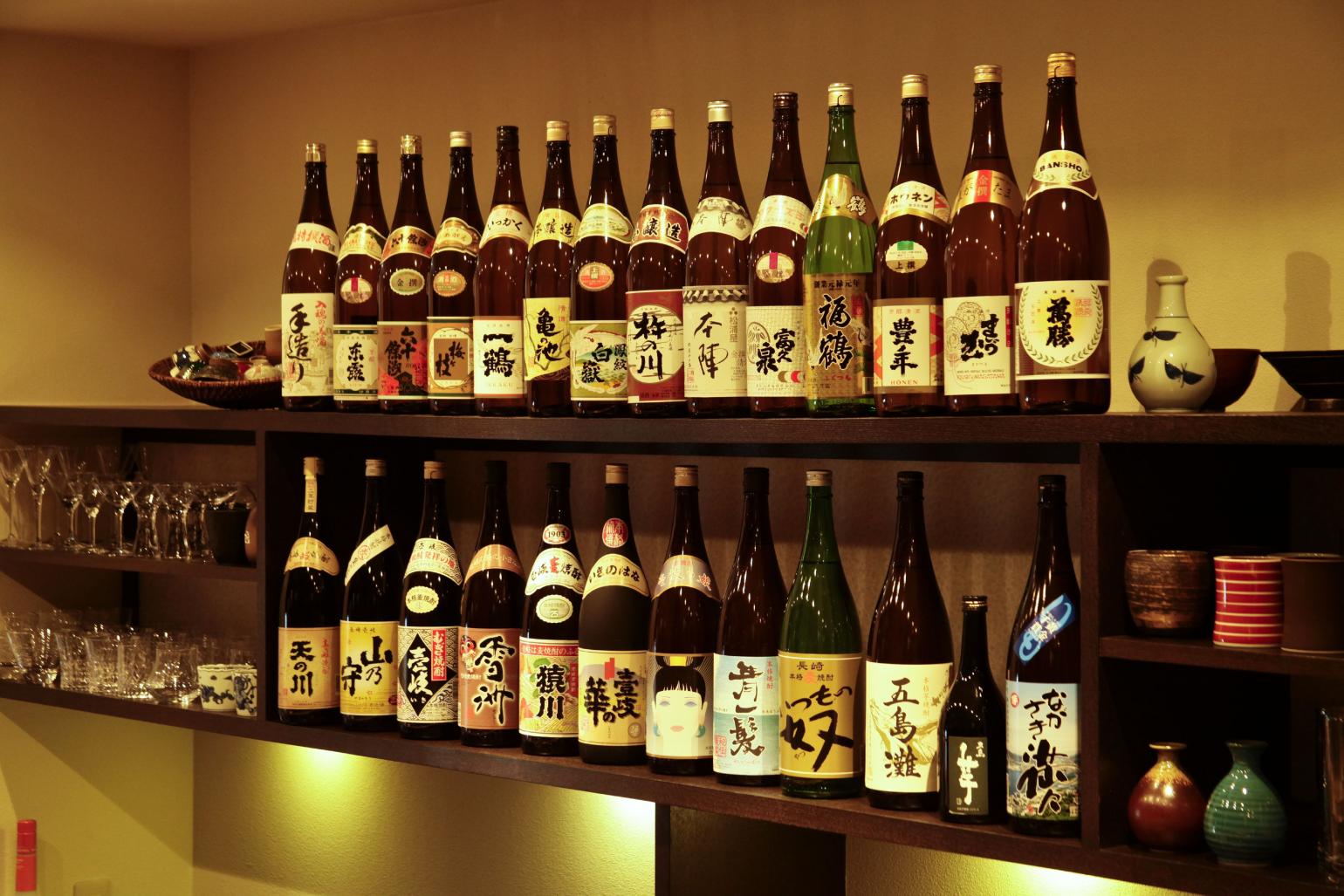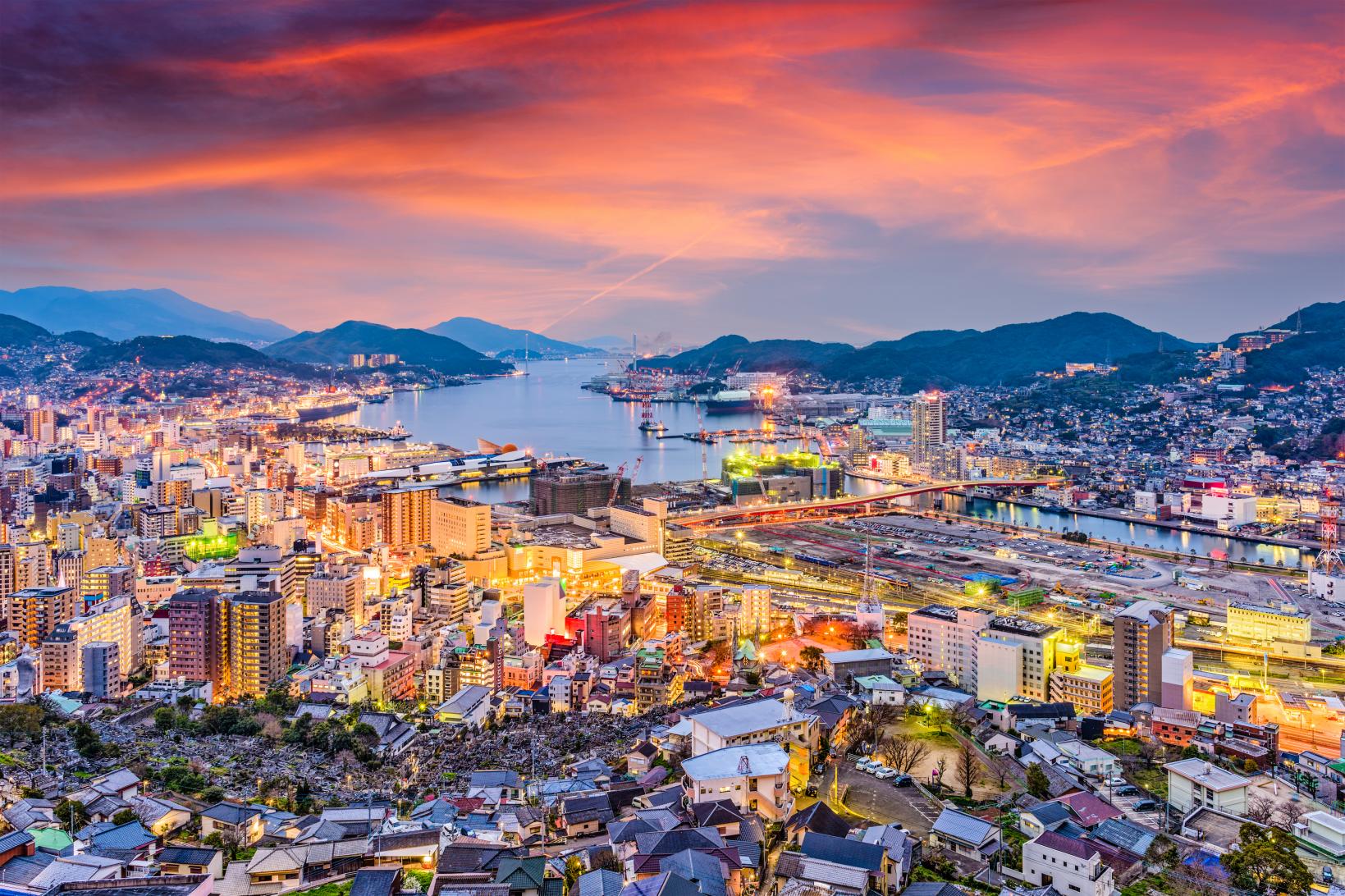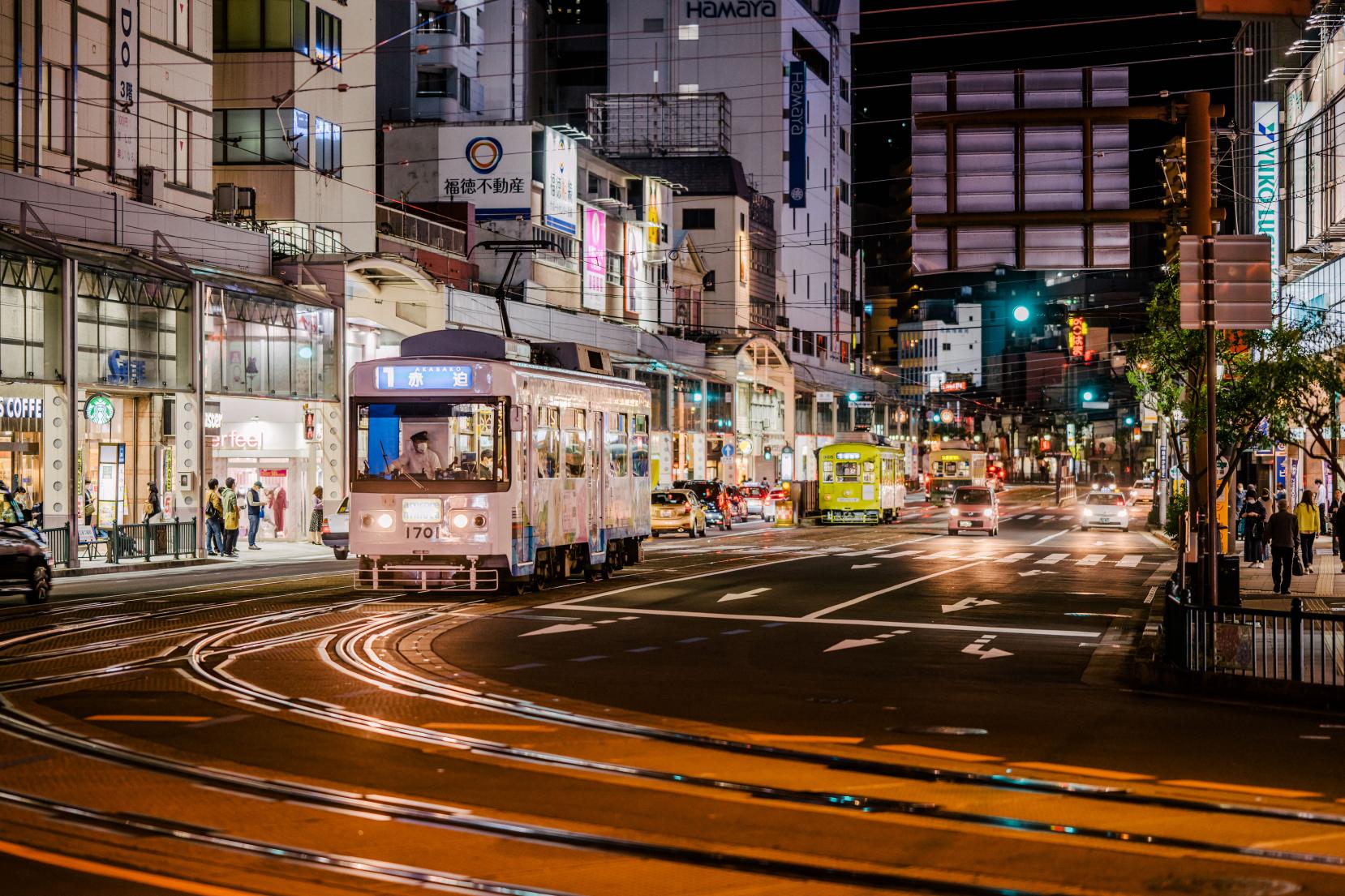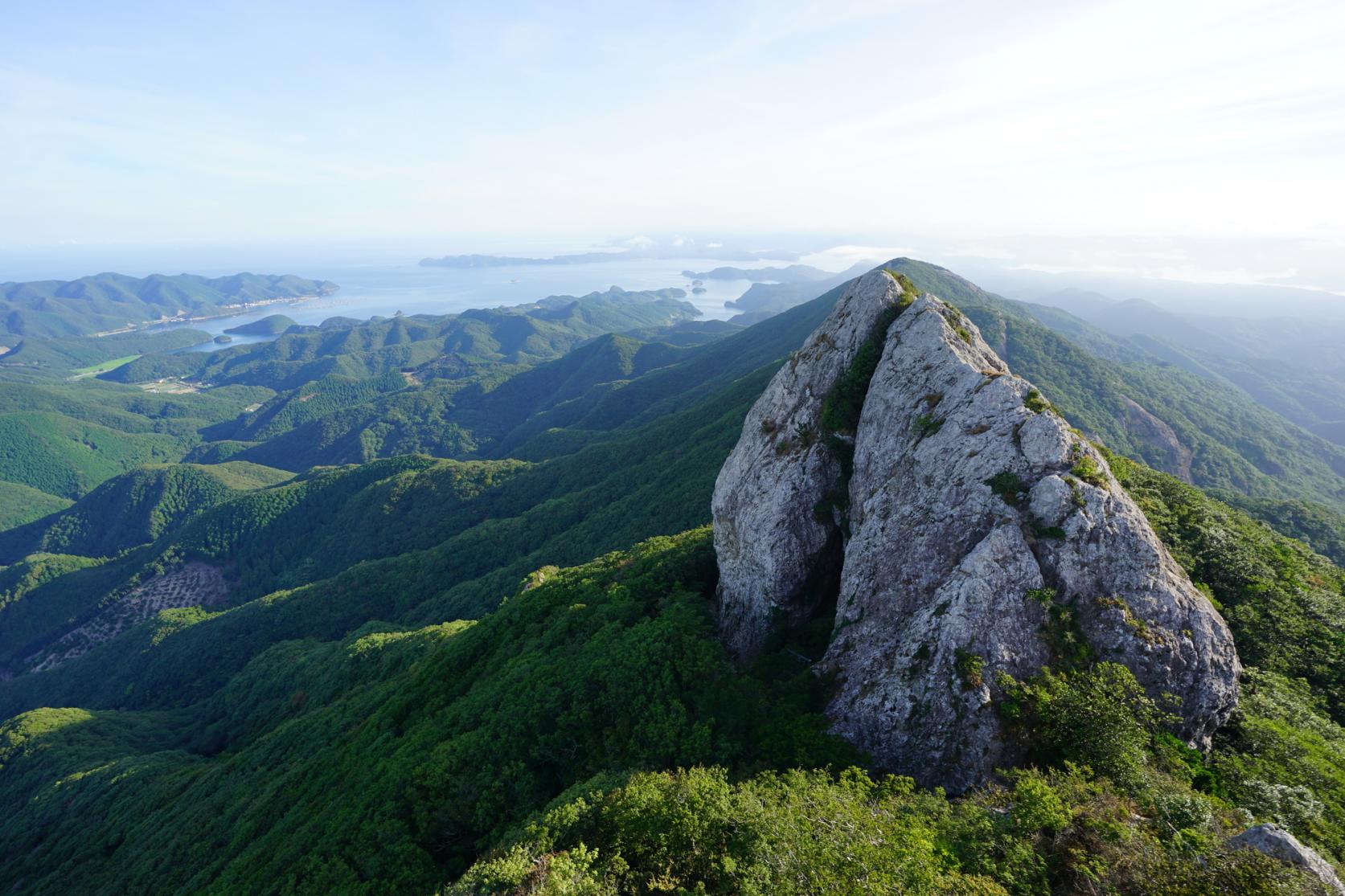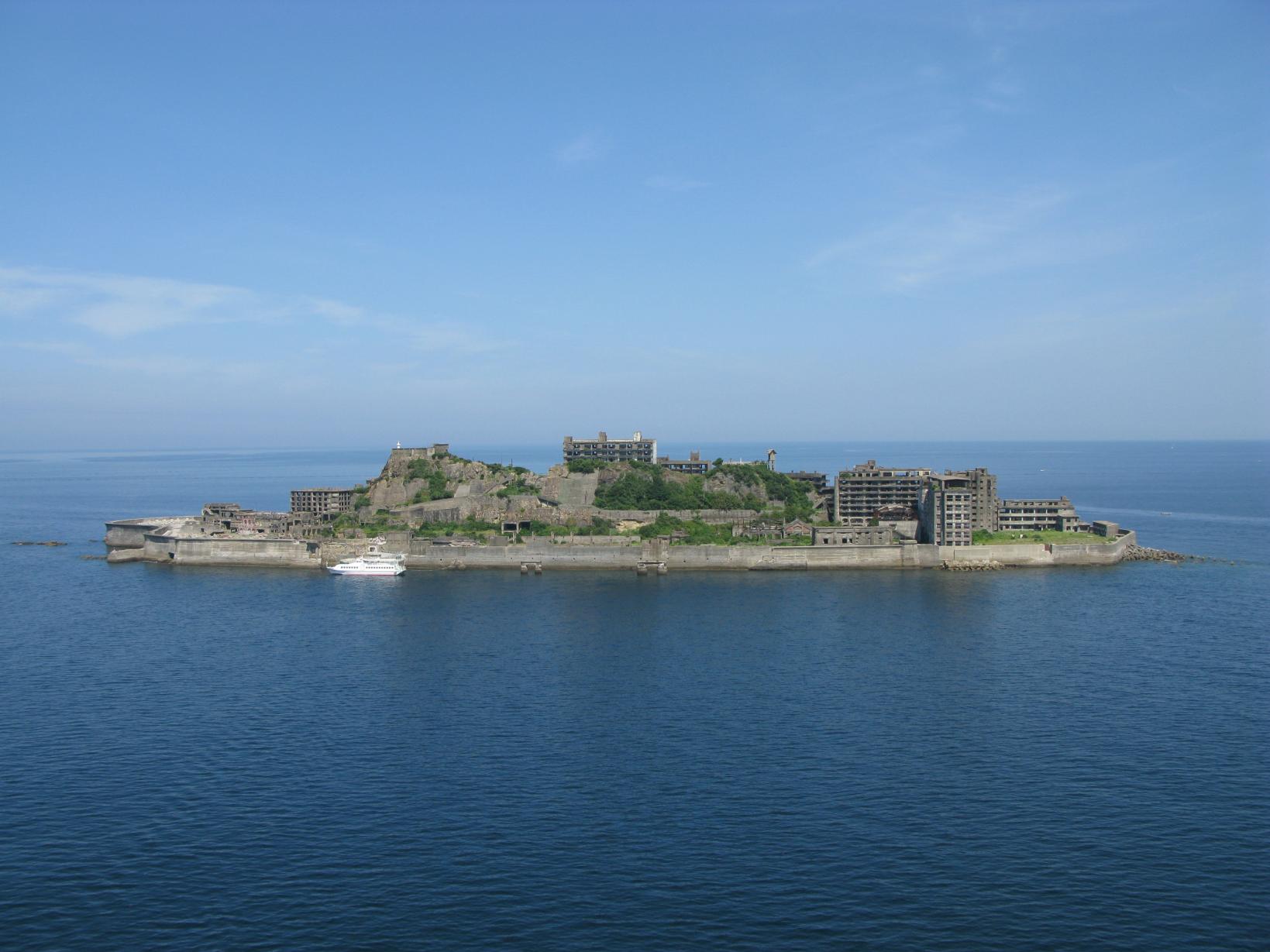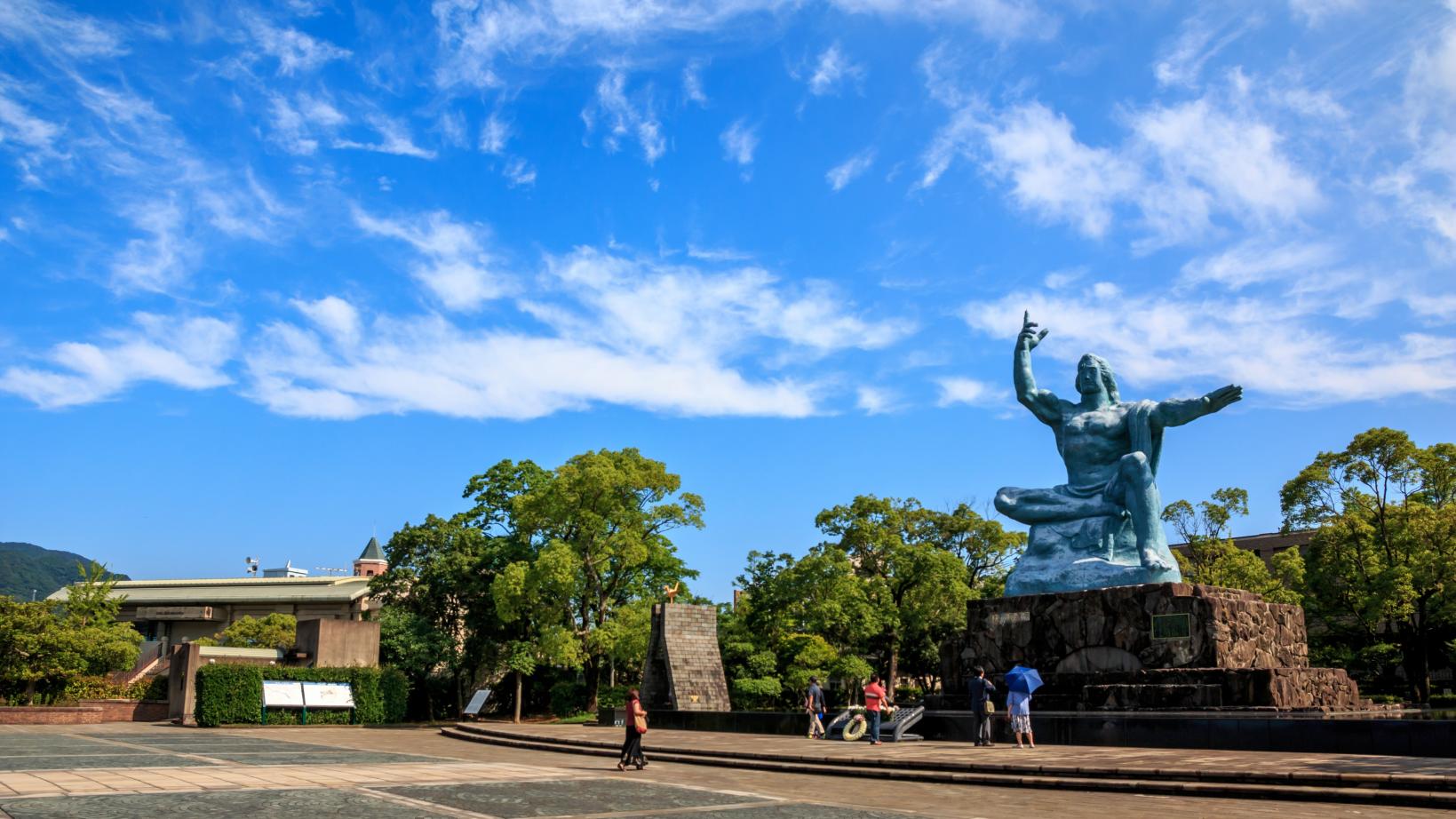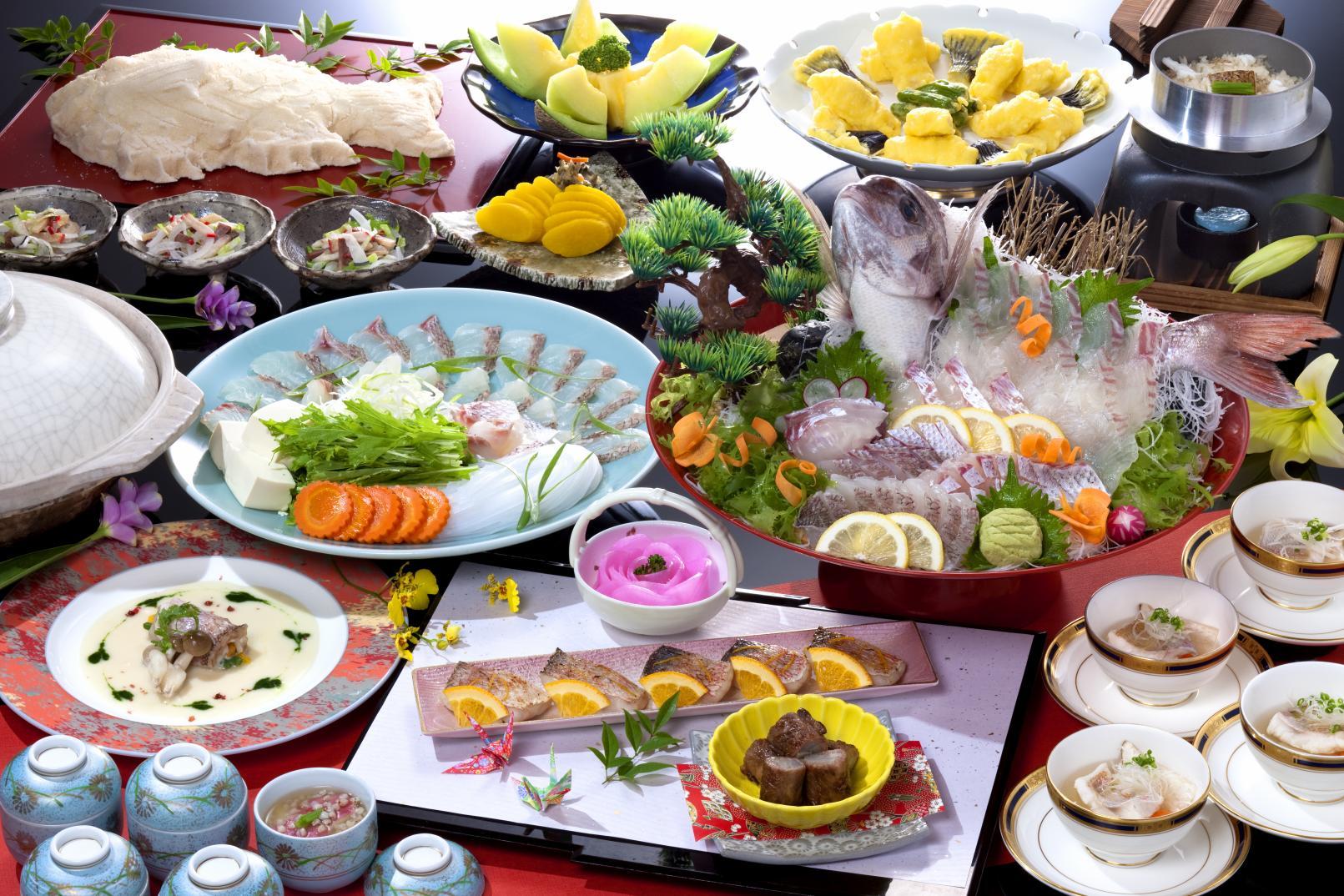
Must try! Nagasaki gourmet special
The culinary culture in Nagasaki Prefecture has always been one of a kind in Japan. Many local cuisines in the prefecture were developed in the Edo Period when Nagasaki was an international trading port. As such, the mixture of cultural influences were also reflected on the local dishes, and these tasty dishes were then passed down for generations to what it is famously known for today (champon, shippoku, castella and many more).
Nagasaki is also a seafood kingdom. Having the fresh catch of the day is very common in local restaurants across the prefecture, and while some fish are limited to its season, the majority of the common and popular fish species are available year-round.
Other info for you
Search with GURUNAVI - Check and reserve the seat
Vegetarian Friendly Restaurants - Check and choose to where to visit
Restaurants in Nagasaki city - Enjoy restaurants during your trip around Nagasaki cit
Overview
- Taste top-quality seafood in Nagasaki, fish wonderland
- Juicy and tender Nagasaki Wagyu (Japanese beef)
- Nagasaki's famed Champon and Sara-udon
- Traditional dishes give a taste of Nagasaki history and tradition
- A noodle culture emerged in Nagasaki
- Local delicacies of Nagasaki
- Nagasaki liquor to go with the local delicacies
- Much-loved local sweets
Taste top-quality seafood in Nagasaki, fish wonderland
Nagasaki is a Treasure-Chest of Seafood. The coastline of Nagasaki is long and intricate with remote islands, coves and bays. This coastline, along with the sea current, creates one of the best locations for fishing in Japan.
Nagasaki hauls in the second largest fish catch in Japan, but it is ranked No.1 for having the most variety of fish, with over 250 species! Some of the most common types of seafood that you can enjoy year-round include Japanese Horse Mackerel (Aji), Chub Mackerel (Saba), Red Sea Bream (Tai), Grunt (Isaki), Pufferfish (Fugu), Yellowtail Amberjack (Buri), Pike Conger Eels (Anago), and Marble Rockfish (Arakabu). Other seasonal specialities include Japanese Spiny Lobster (Ise-ebi), Flounder (Hirame), Flying Fish (Ago), Cutlassfish (Tachiuo) and many more!
Throughout the prefecture, you can easily enjoy fresh and delicious seafood in various ways including sashimi, sushi, seafood rice bowl, hotpot, and even steaming it over natural hot spring! There are also numerous gourmet events throughout the year for seafood lovers!
-
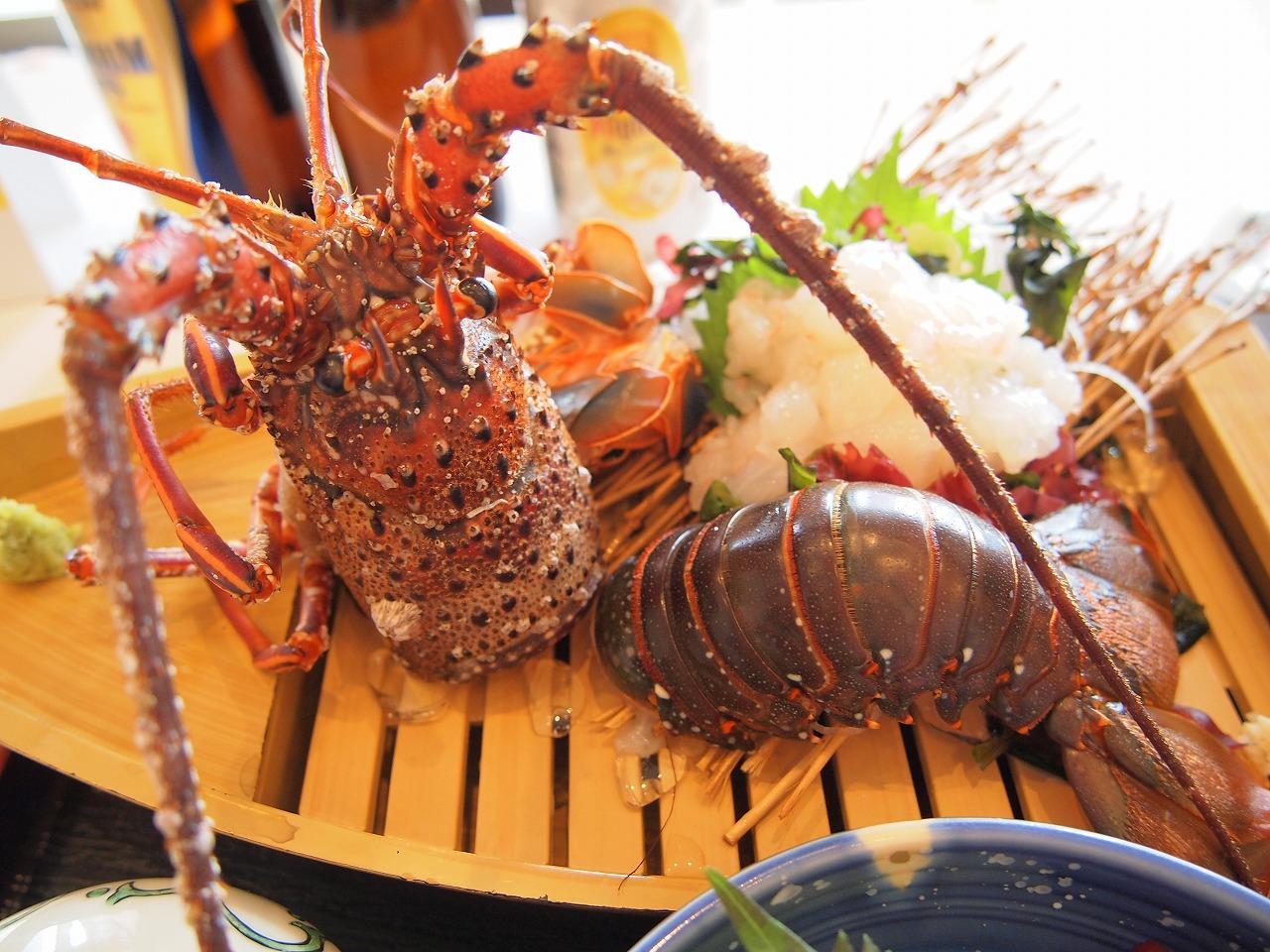
Ise-ebi(Japanese Spiny Lobster)
View more"Ise-ebi", also known as Japanese Spiny Lobster, has firm white meat and a delicate natural sweet taste. Every September, the Nomozaki region in Nagasaki City holds a festival where one can enjoy Ise-ebi at a bargain price.
-
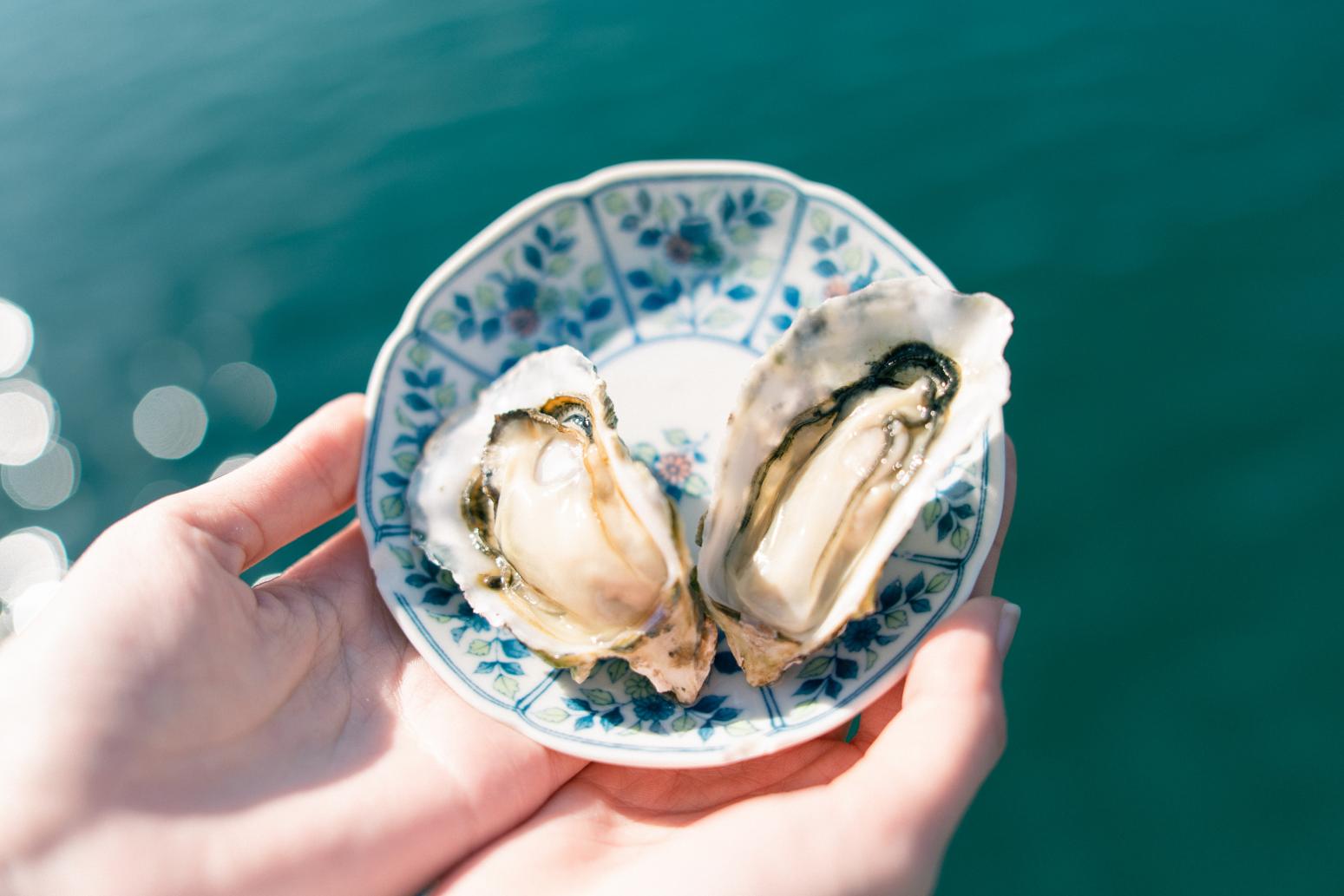
Oyster
View moreOysters farmed in Nagasaki Prefecture are plump and juicy. Especially during the autumn and winter season, you can enjoy delicious barbequed oysters at little huts along the coast, or choose to have it steamed over natural hot spring in the Obama region. You can also enjoy barbeque oysters during the Oyster Festival at Kujukushima Pearl Sea Resort in November and February.
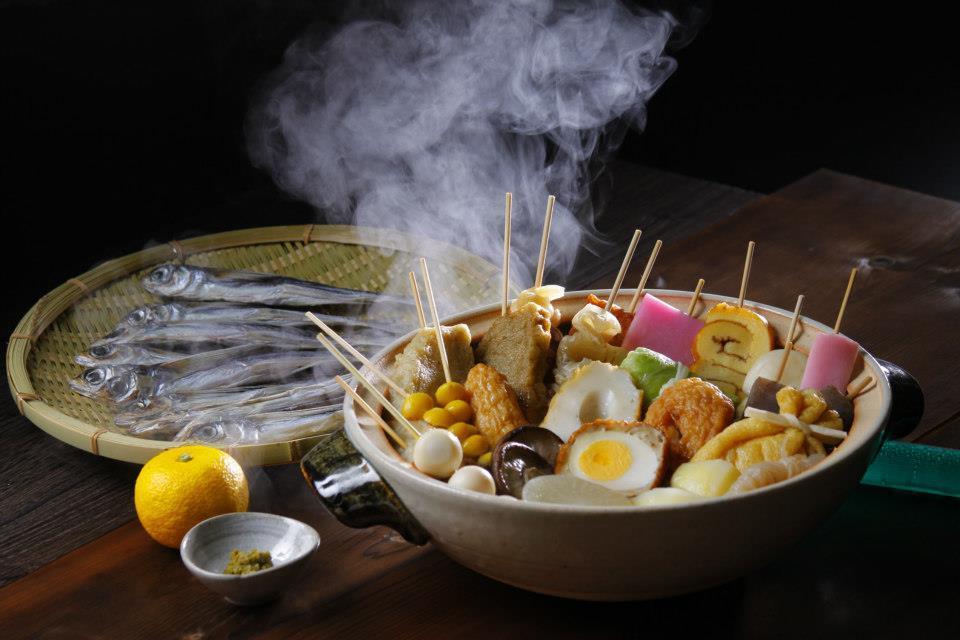
Nagasaki's Kamaboko (fish cake) concentrates the umami of seafood
Nagasaki has the largest number of Kamaboko (fish cake) stores in Japan. Nagasaki Kamaboko is made from fresh local fish such as sardines, lizardfish, white croakers, and etc. There is a wide variety of Kamaboko available in Nagasaki Prefecture (in terms of shape and cooking method), and you can enjoy it as it is from the stores, or try it in oden, champon, deep-fried and many more.
Juicy and tender Nagasaki Wagyu (Japanese beef)
Every five years, the National Japanese Beef Quality Competition (also referred to as the "Wagyu Olympics") is held in Japan. In 2012, the "Nagasaki Wagyu" beef won the Prime Minister's Award, earning recognition as the best Wagyu in Japan.
Today, Nagasaki Prefecture continues to be one of the leading producers of premium Wagyu. In particular, Iki Island and the Goto Islands are renowned for breeding high quality cattle, and those cattle are then shipped to other prefectures to be raised and sold under their own branded name.
There are many restaurants throughout the prefecture that offers exceptional Nagasaki Wagyu at an affordable price. There are also various ways that restaurants incorporate wagyu into their menus such as steak, deep-fried beef cutlets (gyu-katsu), hamburger, suki-yaki and in barbeque.
The superb balance between the lean and marble meat in Nagasaki Wagyu provides a juicy and tender texture to the meat - a must-try for meat lovers!
Nagasaki's famed Champon and Sara-udon
At the mention of Nagasaki, many people in Japan immediately think of Champon. This dish is loved not only by tourists, but also the locals as well.
Champon is a noodle dish packed with vegetables, pork and seafood in a rich creamy broth made from pork and chicken bones. The dish was created in
the Meiji Period by a local Chinese restaurant that wanted to provide a low-cost yet highly nutritious meal for the local Chinese students. Since then, it has become one of the well-loved and famous gourmet in Nagasaki Prefecture.
Sara-udon, another local specialty dish, has vegetables and seafood mixed in a thick creamy sauce that is covered on top of either thin crispy noodles, or on regular champon noodles.
Traditional dishes give a taste of Nagasaki history and tradition
Nagasaki is home to many traditional dishes that are imbued with history.
Shippoku cuisine, in which dishes are heaped on plates on a round table for sharing, is a tradition of Nagasaki typical in that it embodies essentials of Japanese, Chinese and European cuisine. Generous portions of local ingredients are used.
Nowadays, Shippoku can be enjoyed at establishments such as Ryotei (traditional Japanese restaurants) and at some high-end hotel restaurants.
But wait, there's more! Traditional cuisine of Nagasaki
-
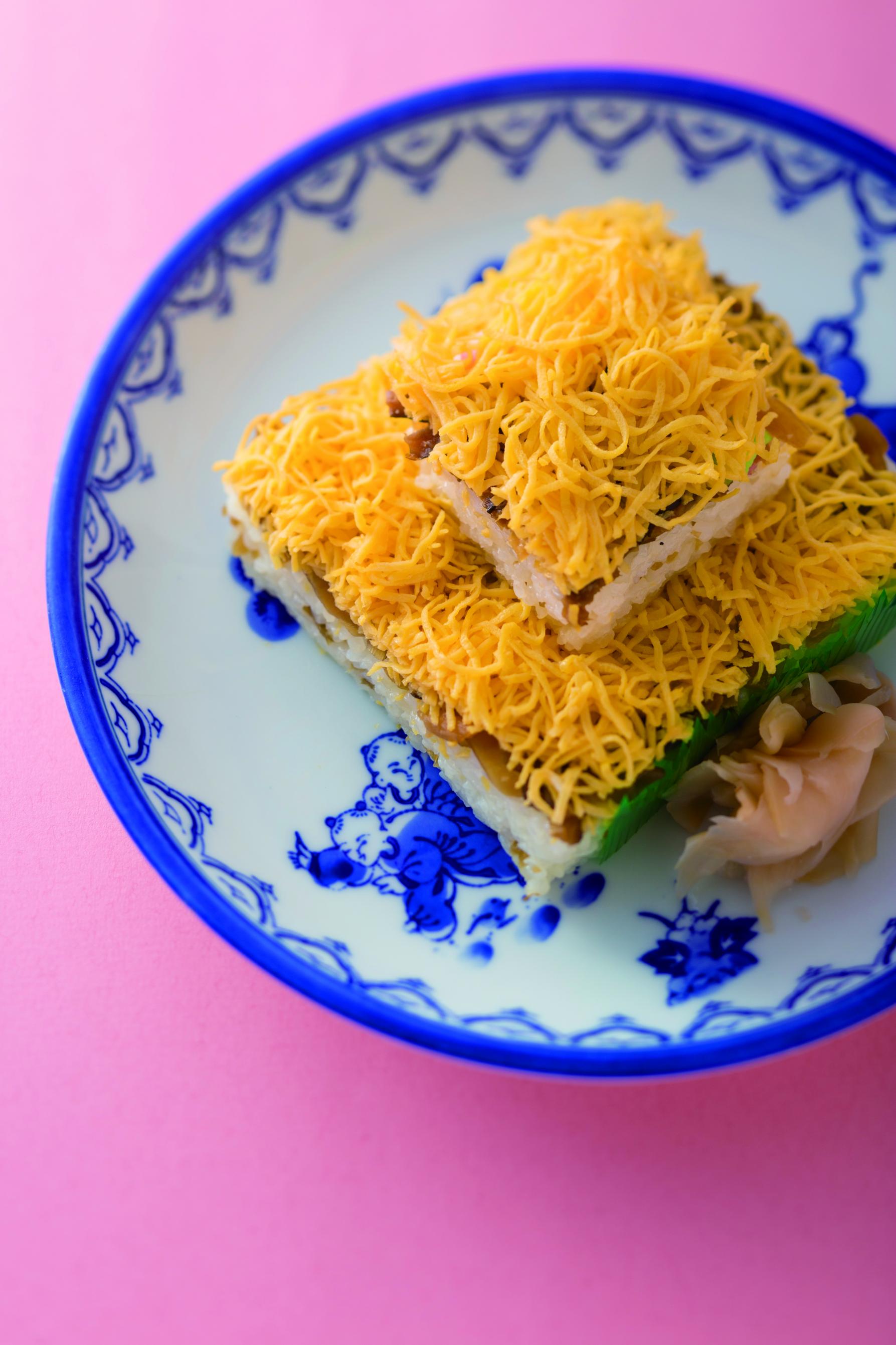
Omura Sushi
The vibrant colors of Omura Sushi is appropriate for a dish that was originally served to feudal lords returning from a victorious battle. It is made with layers of sweet vinegared rice alternating with slices of fish, finely chopped vegetables, and seasoned omelet. Over time, Omura Sushi has become a dish for special occasions and for welcoming guests; of course now it can also be enjoyed at many restaurants.
-
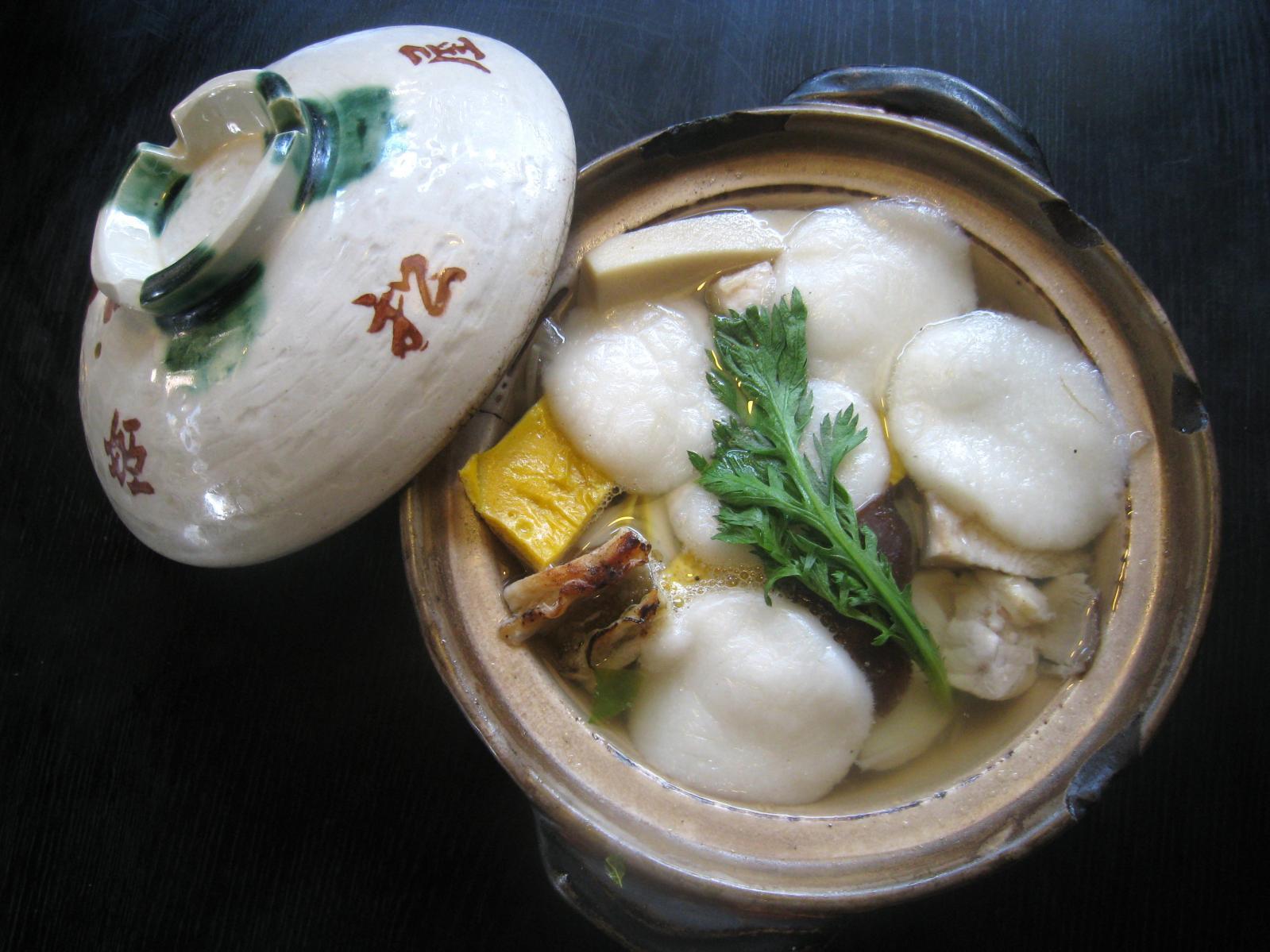
Guzoni
Guzoni is a Shimabara specialty dish made with mochi rice cakes and approximately ten kinds of fresh local ingredients cooked together in a
light yet flavorful broth. This dish was said to be created during the Shimabara Rebellion in 1637, and because of its nutritious value, it was able to support and feed the warriors for three months.Today, this dish is loved by the locals, and recipes may vary from household to household. For visitors, you can try guzoni at many restaurants in the Shimabara region!
A noodle culture emerged in Nagasaki
You can try various types of noodle made with traditional methods in Nagasaki.
-
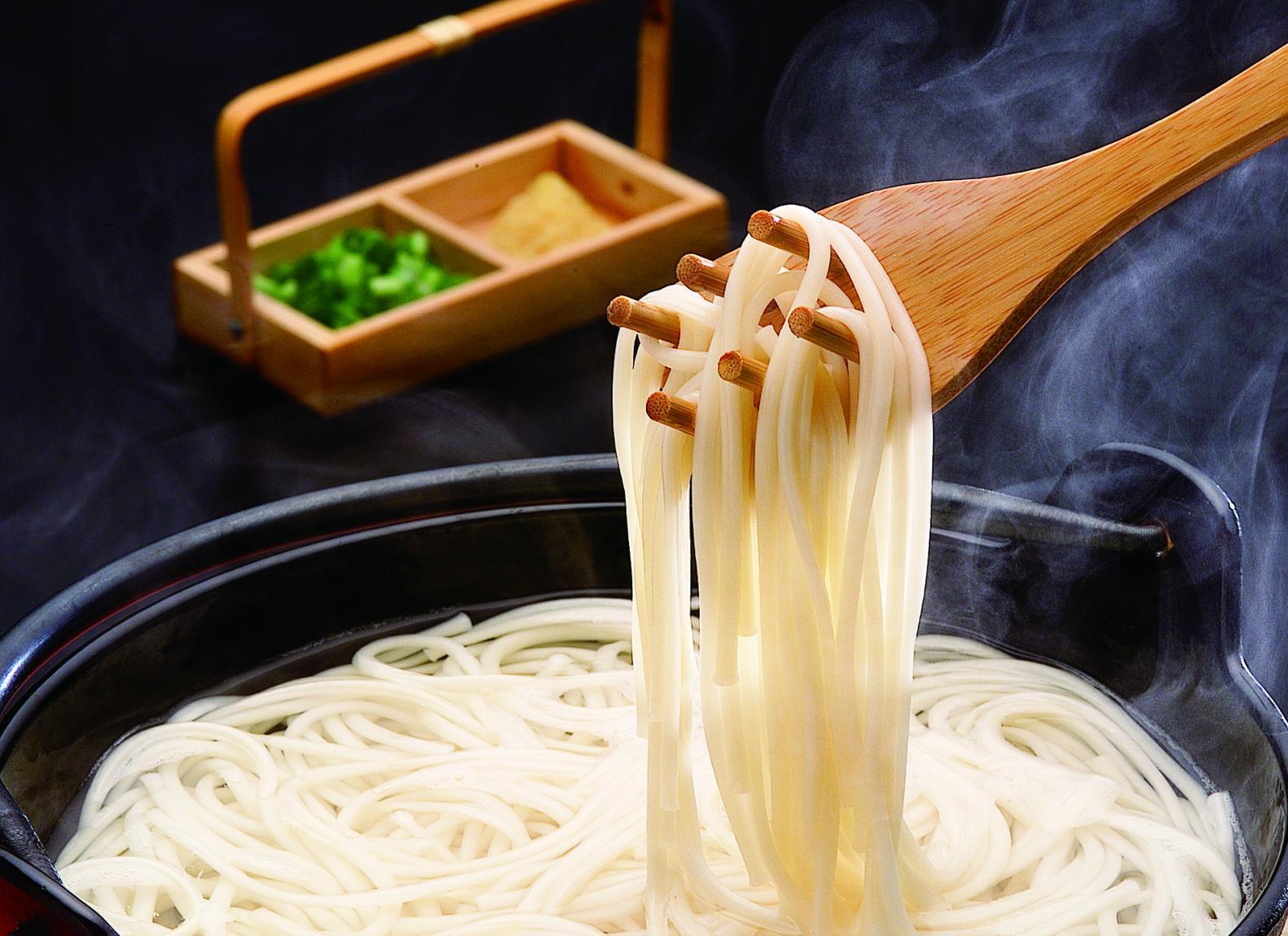
Goto Udon (thick wheat noodles)
Goto Udon is one of the top three famous udon noodles in Japan. This speciality noodle is unique to the islands of Goto (literally meaning five islands), and it is only produced on the Goto. Skinny yet firm, these udon noodles are known for their nice, smooth texture. The recommended serving method is straight from the pot, then eaten with broth and egg. The delicious flavor is so moreish, you want to come back for seconds again and again.
-
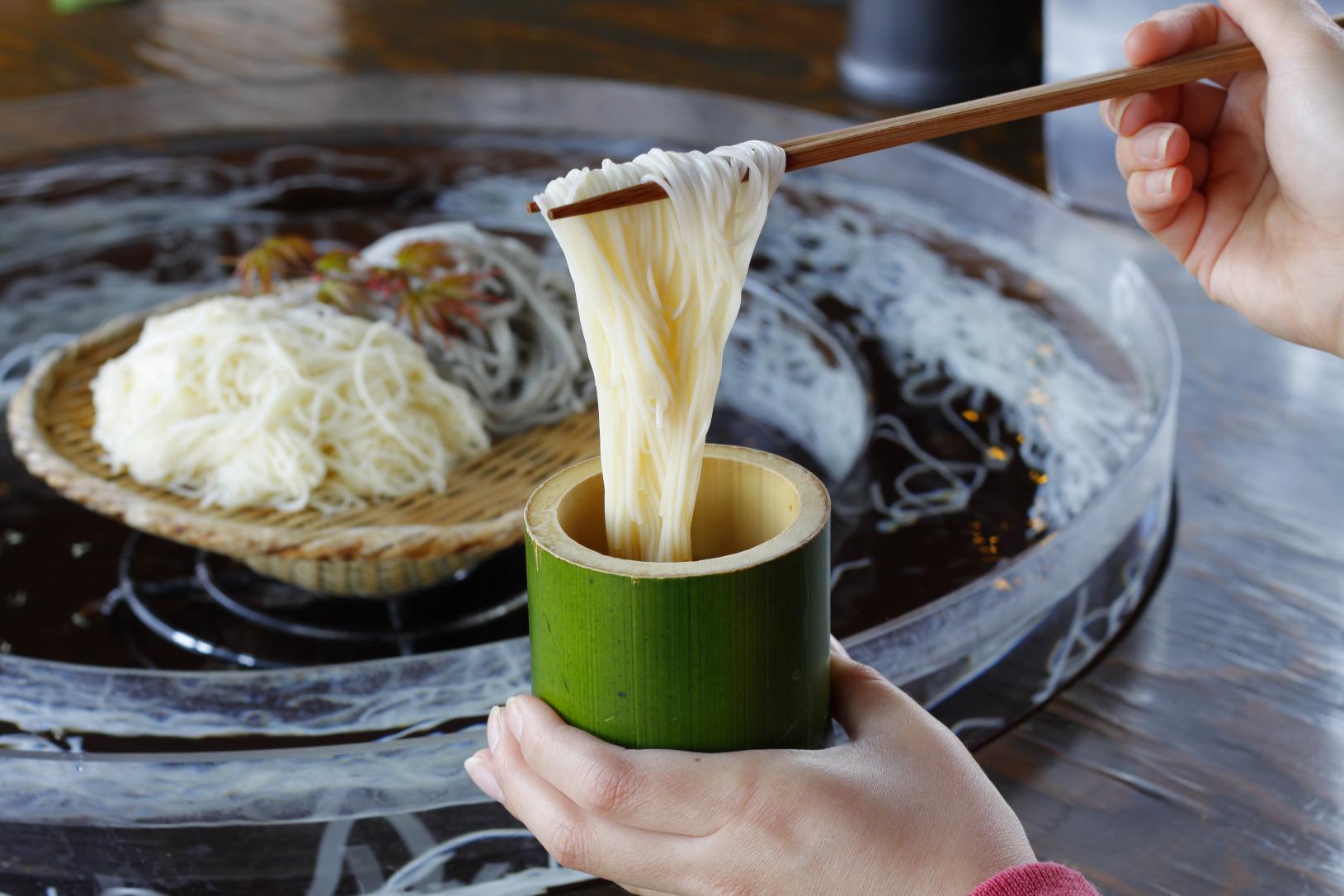
Shimabara Somen(Japanese thin wheat noodles)
Shimabara Somen is a hand-stretched, very thin noodle made with high-quality wheat and spring water from Minami-Shimabara. Although the noodle is quite thin, it has a strong body and a smooth texture. There are approximately 300 local somen manufacturers that produce and contribute to about 30% of all somen production in Japan.
Local delicacies of Nagasaki
Do not miss the richly varied local delicacies of Nagasaki. Try these gems that the locals know and love.
-
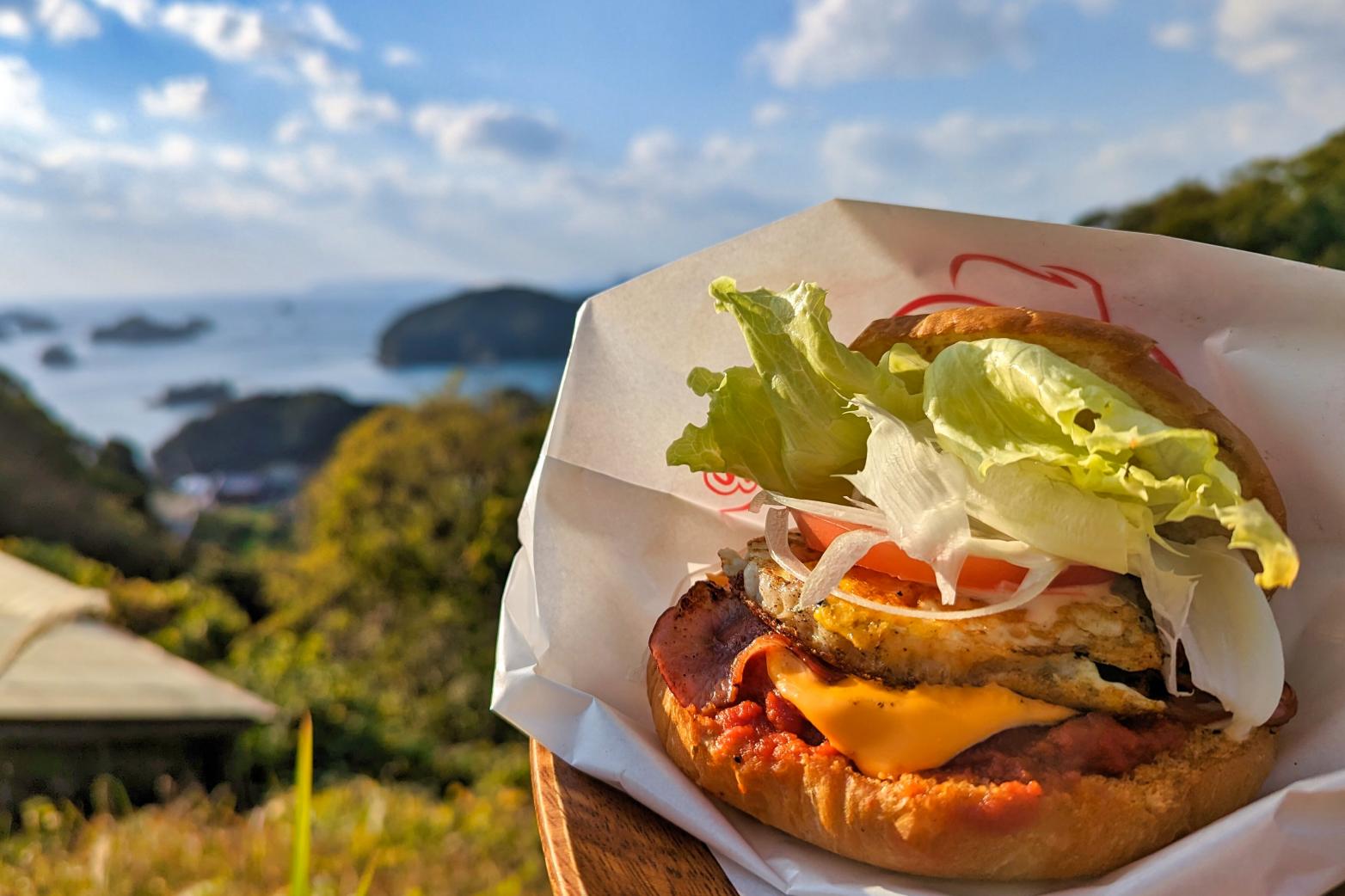
Sasebo Burger
Introduced by American sailors in the 1950s, this American-Japanese fusion burger is famous across Japan. The people of Sasebo adapted the recipe to create their own style of burger, and nowadays there are many registered Sasebo Burger restaurants in the region that offers their own unique taste.
-
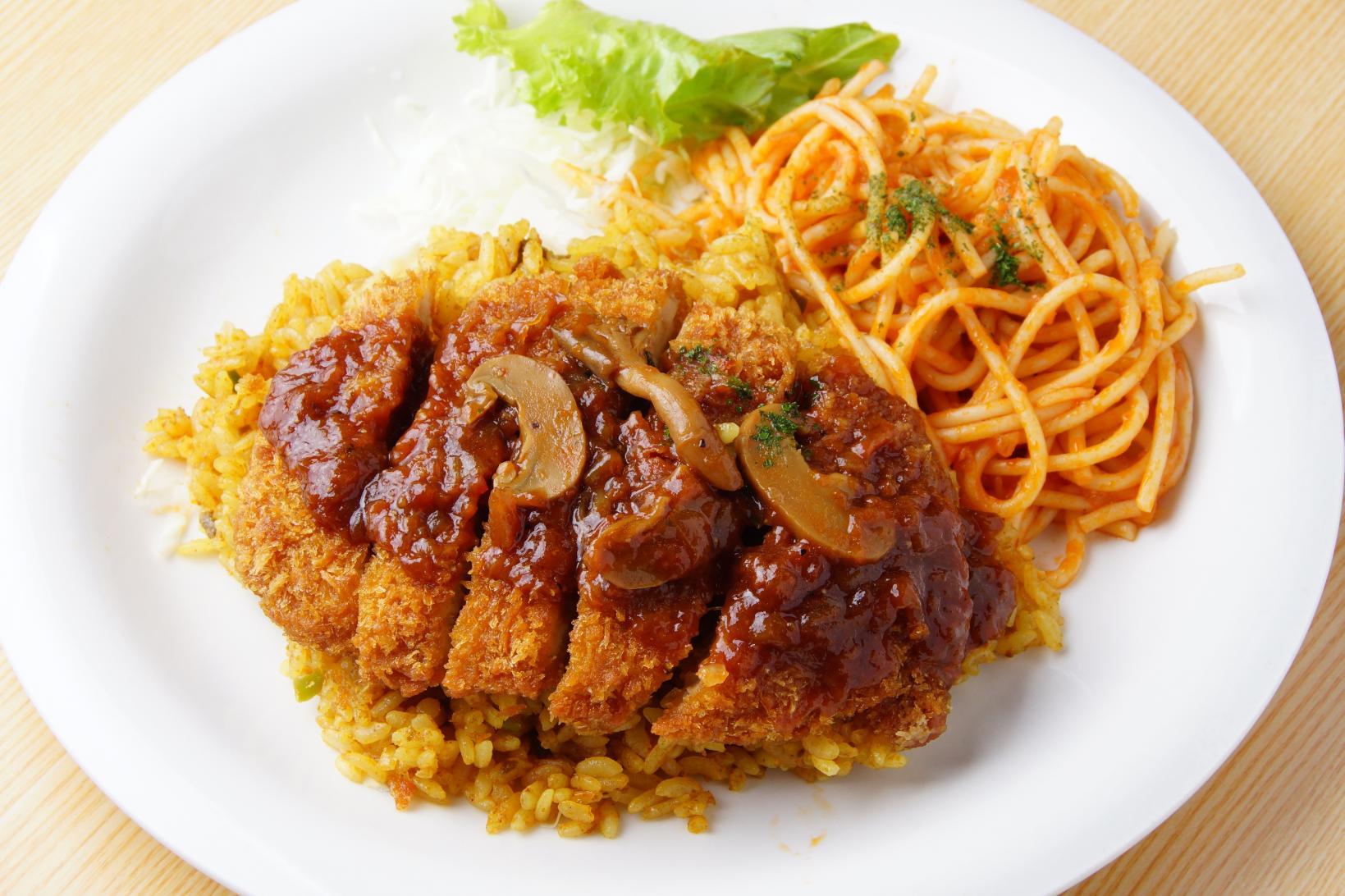
Toruko Rice
"Toruko Rice" is a Western-inspired dish created in Nagasaki City. This dish consists of pilaf rice, spaghetti, and pork cutlets that are generously covered in sauce such as demi-glace sauce, curry and etc. Each restaurant uses a slightly different mix of ingredients, toppings and sauce, creating many variations of this dish.
-
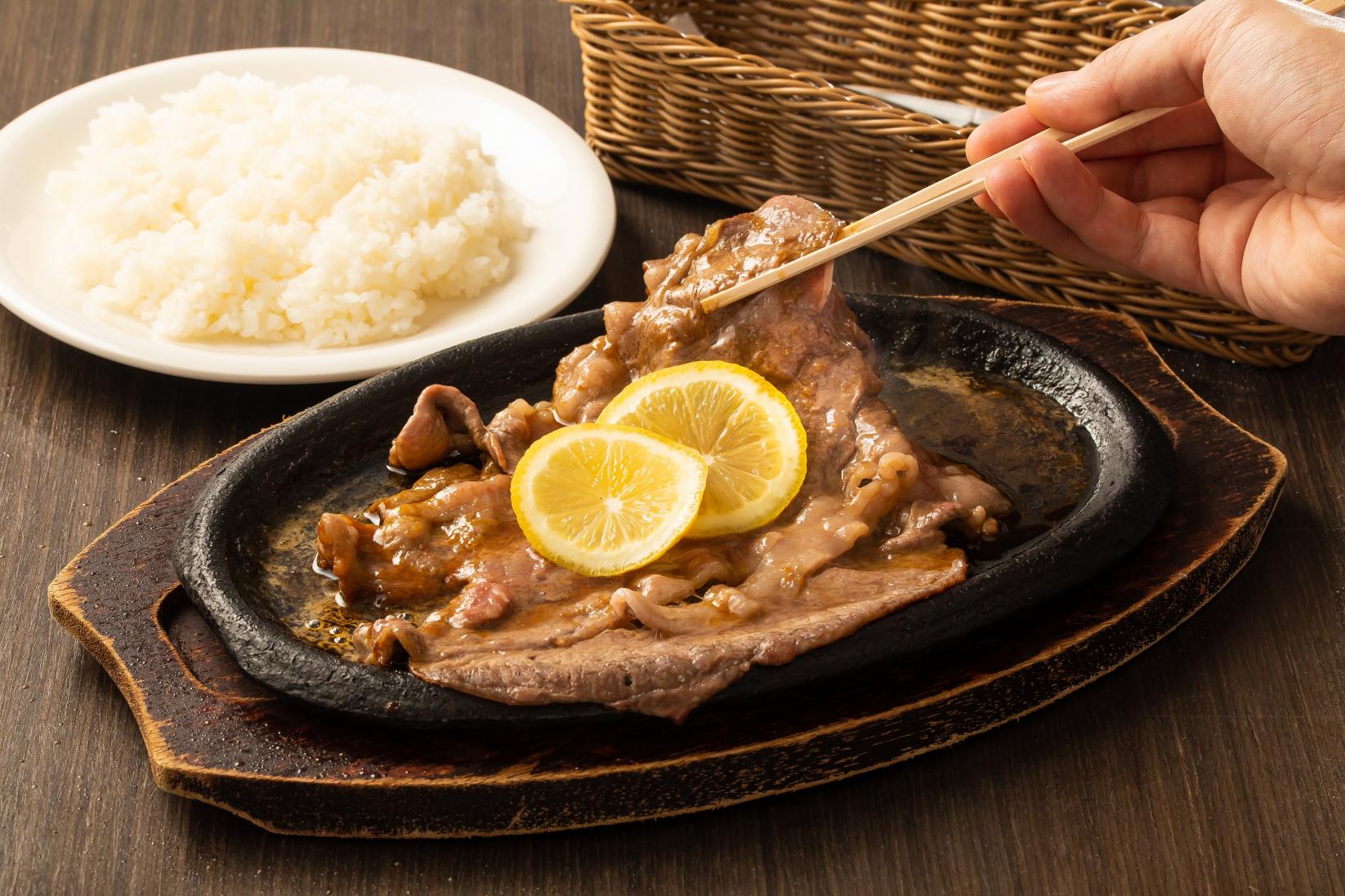
Lemon steak
Lemon steak, a dish originating in Sasebo, consists of thinly-sliced beef seared on a hotplate, then served with a soy sauce-based lemon sauce. It emerged as a way of serving steak, which became popular uynder the influence of the US Navy, which suited the Japanese palate.
-
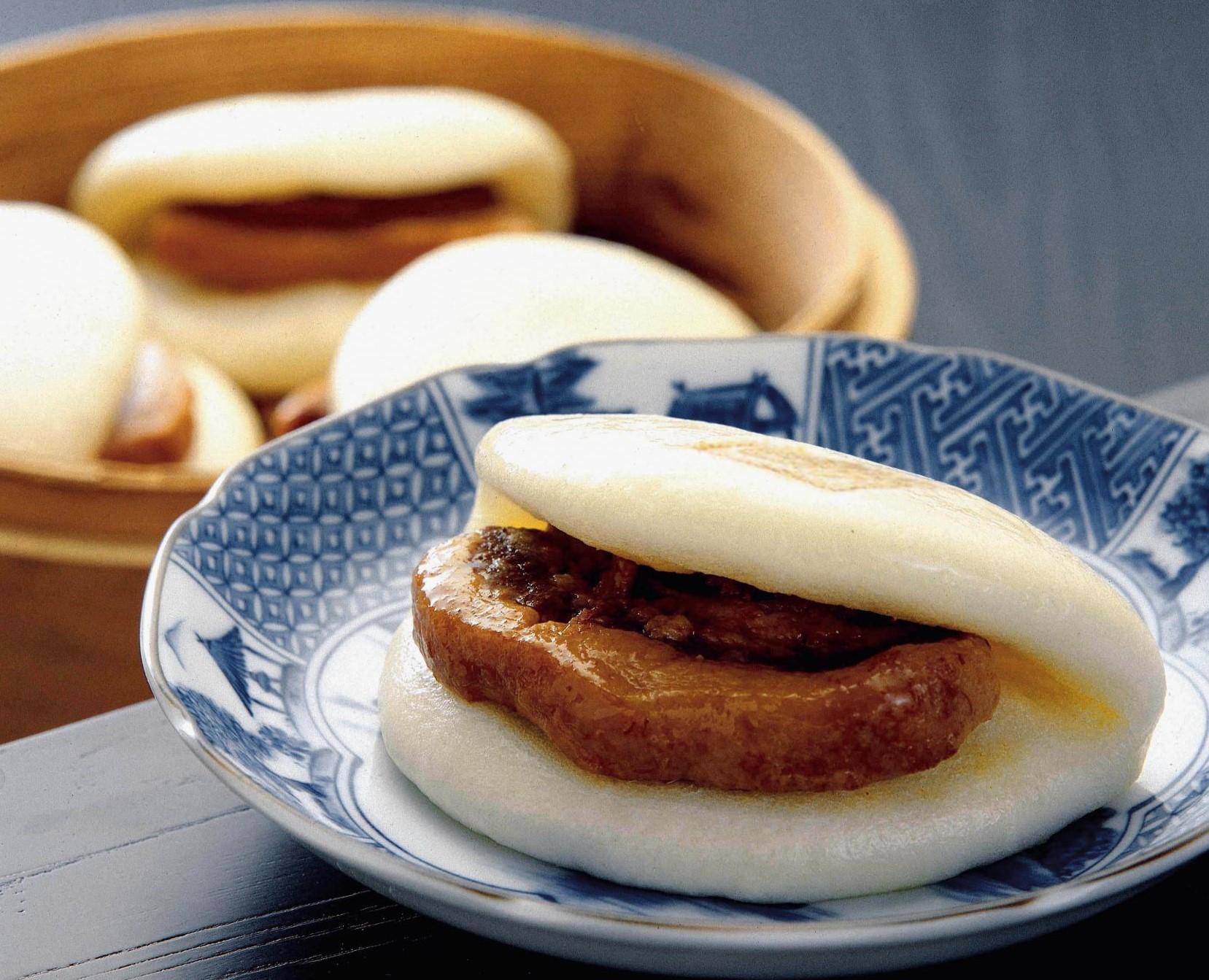
Kakuni manju (braised pork in a steamed bun)
Kakuniman is Nagasaki's unique way of eating "Dongpo Pork" (Chinese-style braised pork belly) wrapped with Chinese buns called "Bao". The soft and tender pork is extremely flavorful, and when you combine it with the fluffy buns, it makes it a tasty snack while on the go!
Nagasaki liquor to go with the local delicacies
The liquor that represents Nagasaki is the shochu fermented on Iki and Goto islands (distilled from wheat, sweet potatoes, etc.). The shochu made on Iki Island, which is said to be the birthplace of barley shochu, is characterized by its barley aroma and sophisticated sweetness. Seven distilleries are found on the island, where tours and tastings are available. The Goto islands are the place to enjoy the ample aroma and deep flavor of sweet potato shochu. Shochu made exclusively from the high-quality sweet potatoes grown on the islands is a passion of its producers and a sought-after product.
Nagasaki Prefecture is also dotted with long-established sake breweries with over 100 years of history. Pure water, quality rice and masterful skill are the ingredients of the unique sake of the region. Enjoy.
Much-loved local sweets
There are plenty of locally-produced sweets in Nagasaki that locals have loved for generations.
-
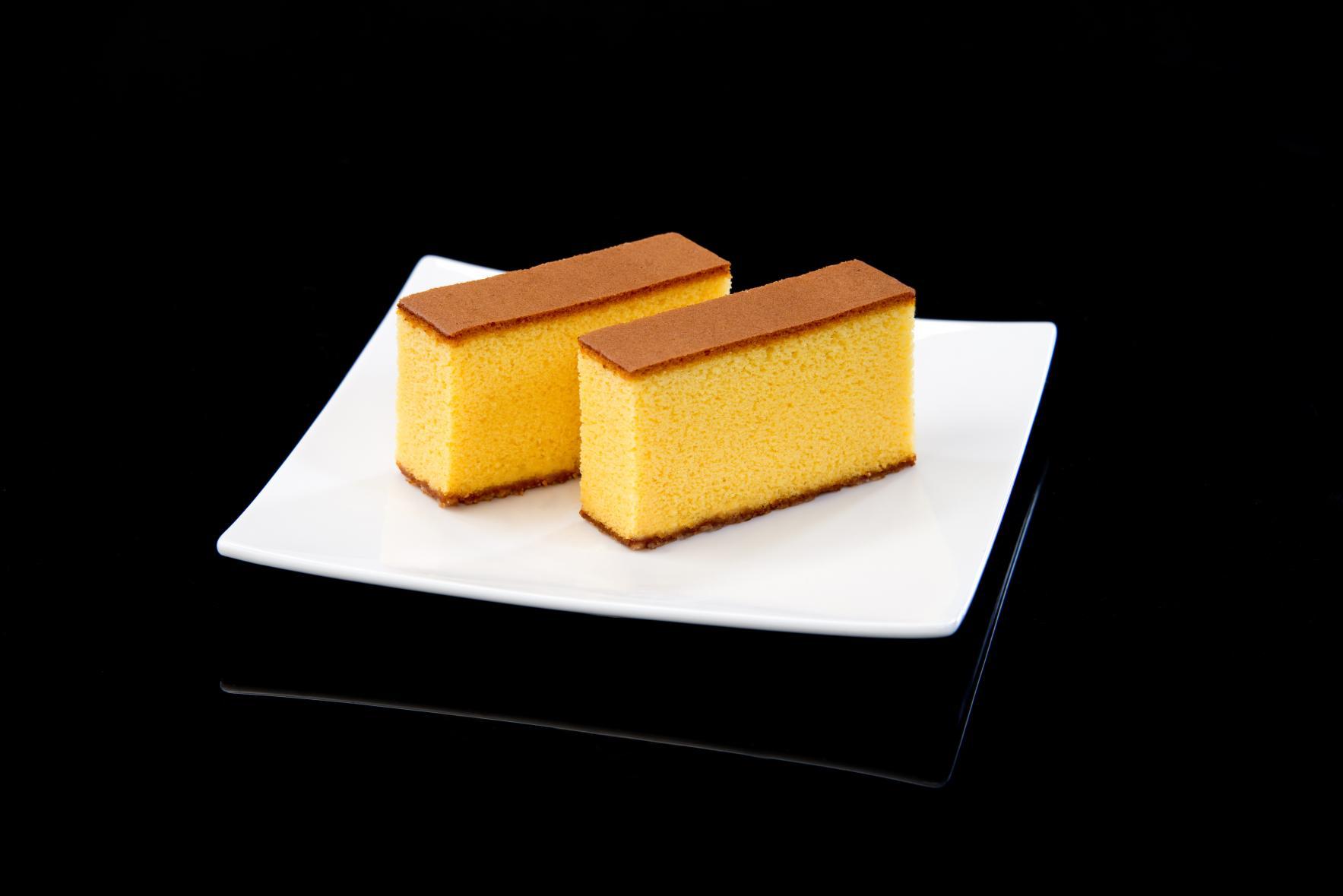
Castella
Castella is a sweet and moist sponge cake that was first introduced by the Portugese missionaries in the mid 1600s. The recipe was customized by the people in Nagasaki, and it is now a famous sweet known throughout Japan.
-
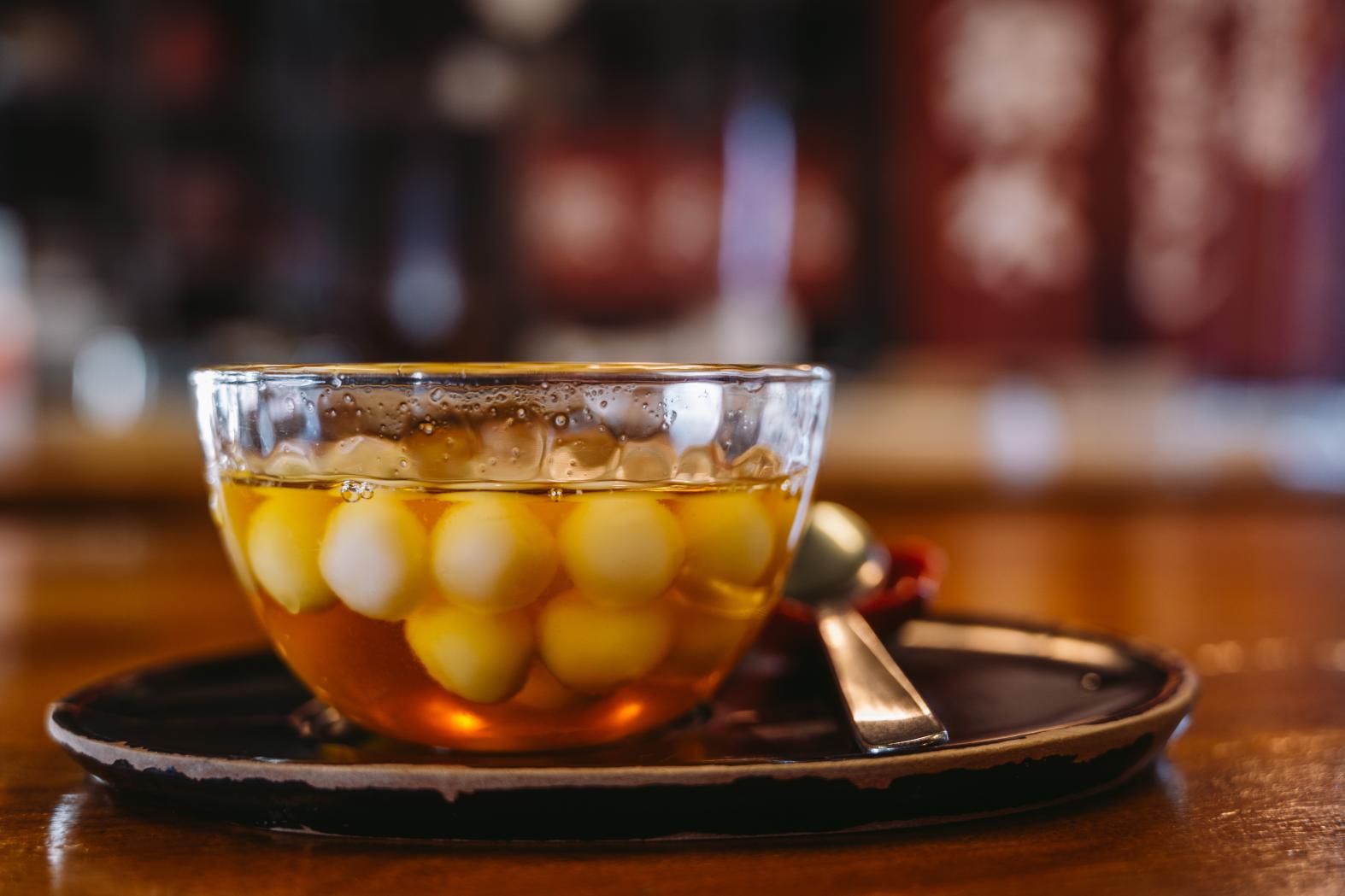
Kanzarashi
Kanzarashi is a specialty dish in the Shimabara region. This dish consists of cooked small mochi-balls made from rice flour, and it is eaten with a light syrup.
-
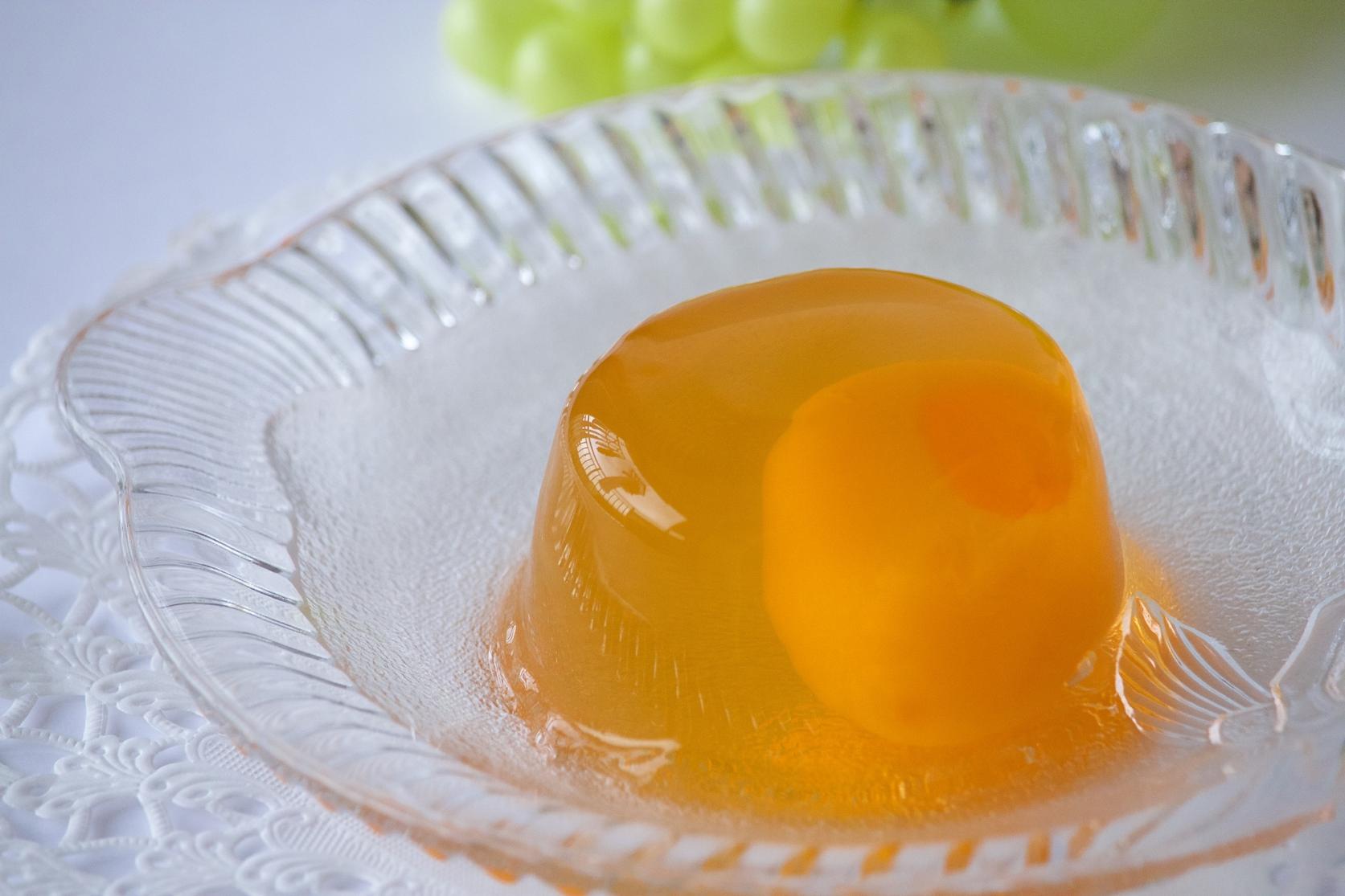
Biwa (loquat) jelly
Nagasaki is the biggest producer of loquats in Japan. The sweet, tart flavor of loquats make this fruit a perfect match for jelly. This whole fruit jelly also makes a popular gift.
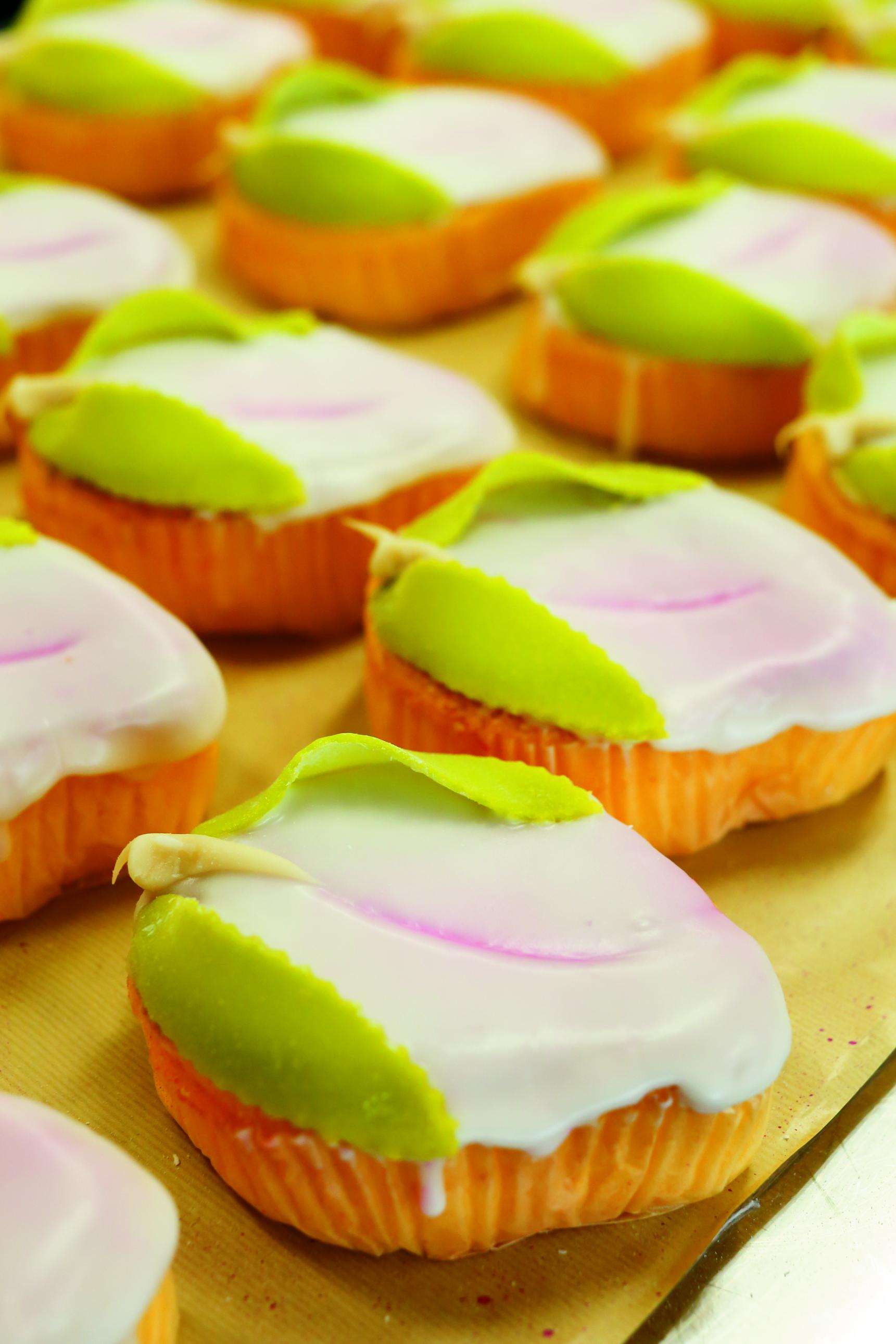
Sugar Road
During Japan’s national isolation period (1639-1853), Dejima in Nagasaki City was the only port open to foreign trade. One of the commodities that was brought into Dejima was sugar, which at the time was an extremely rare and precious commodity in Japan. The sugar was then passed through Nagasaki Kaido (road) to Kokura in Fukuoka Prefecture, and distributed from there to all over Japan. As such, the sugar culture flourished at each post town along the way in northern Kyushu; i.e. Nagasaki, Saga and Fukuoka Prefecture.
Nagasaki Kaido (now nicknamed as “Sugar Road”), was designated as "Japan Heritage" in 2020 as the history and food culture associated with this road was recognized as an important cultural asset of Japan.
NEXT



